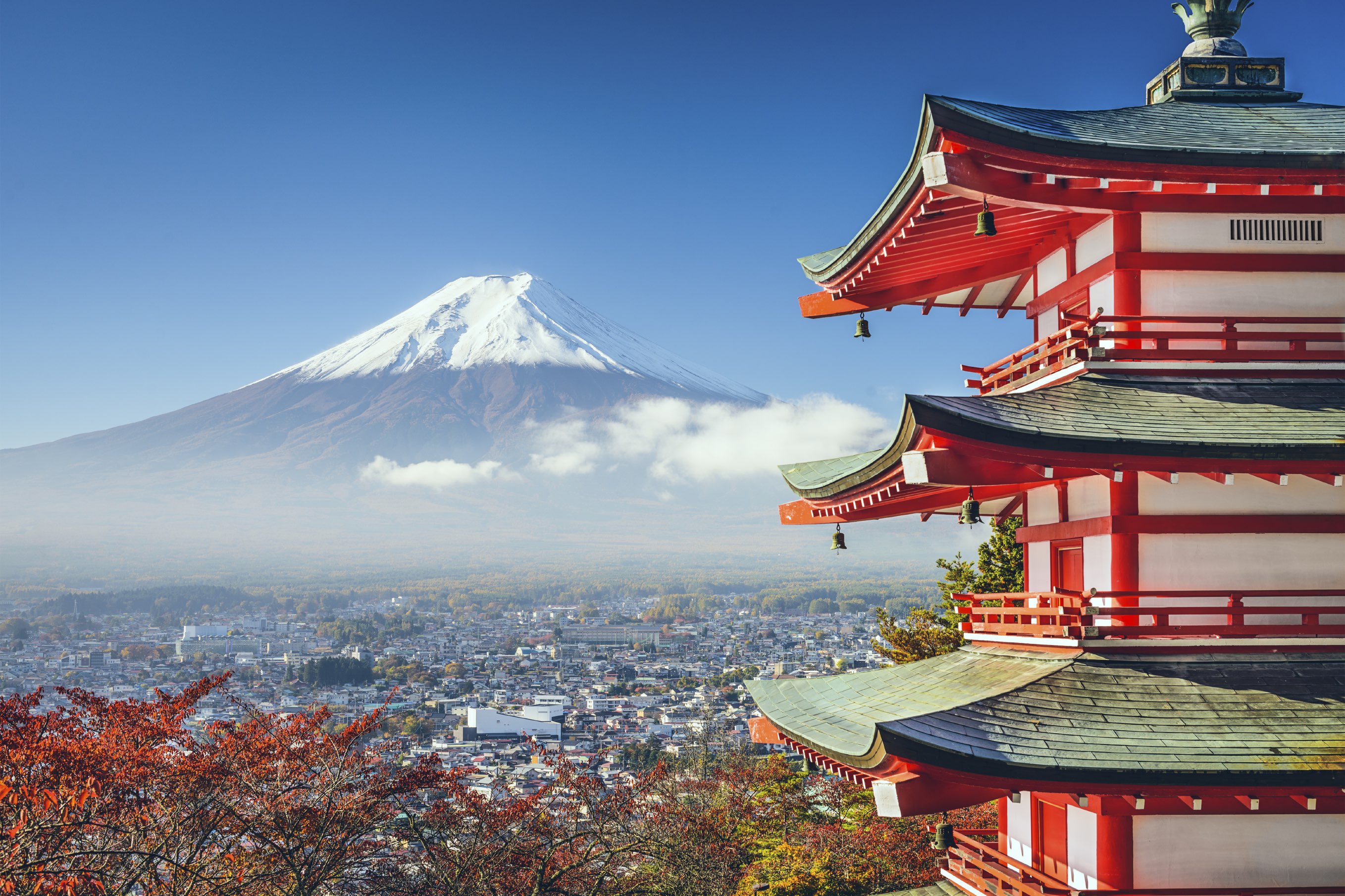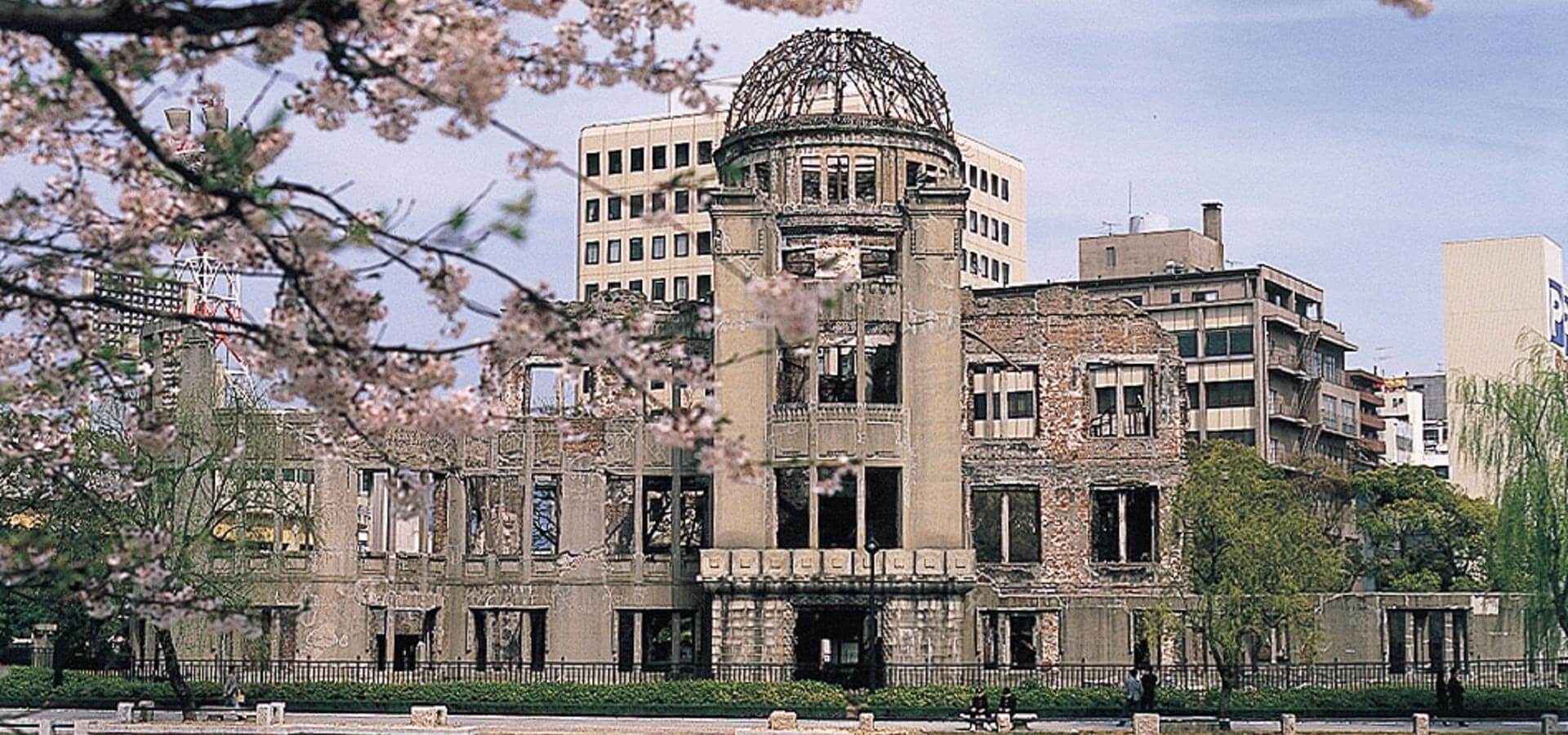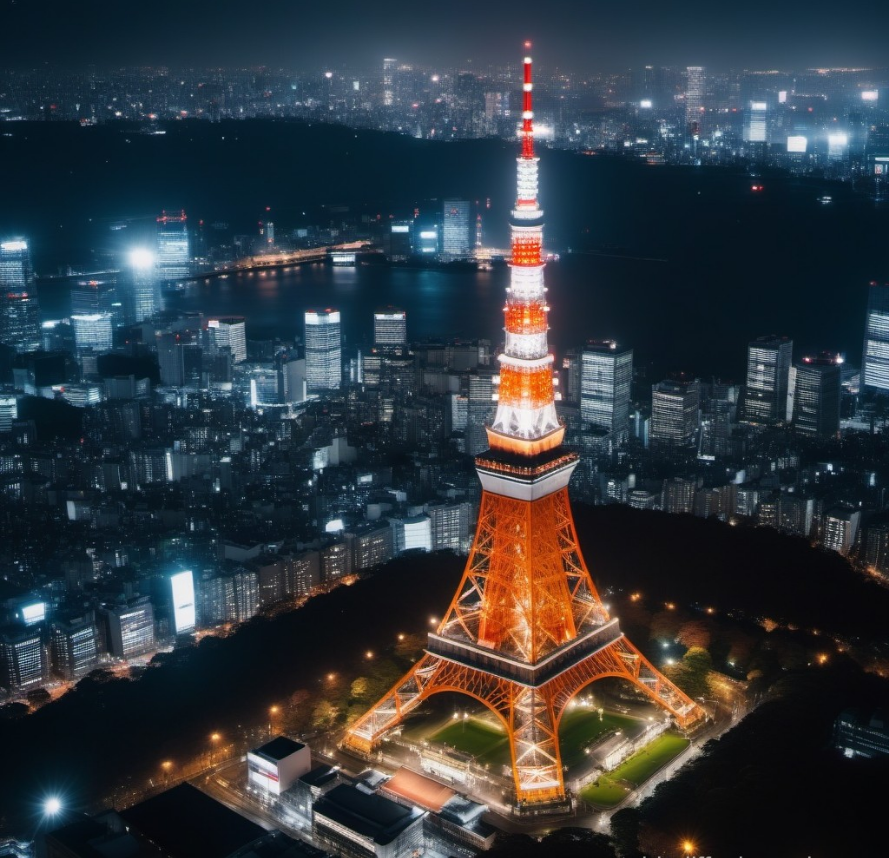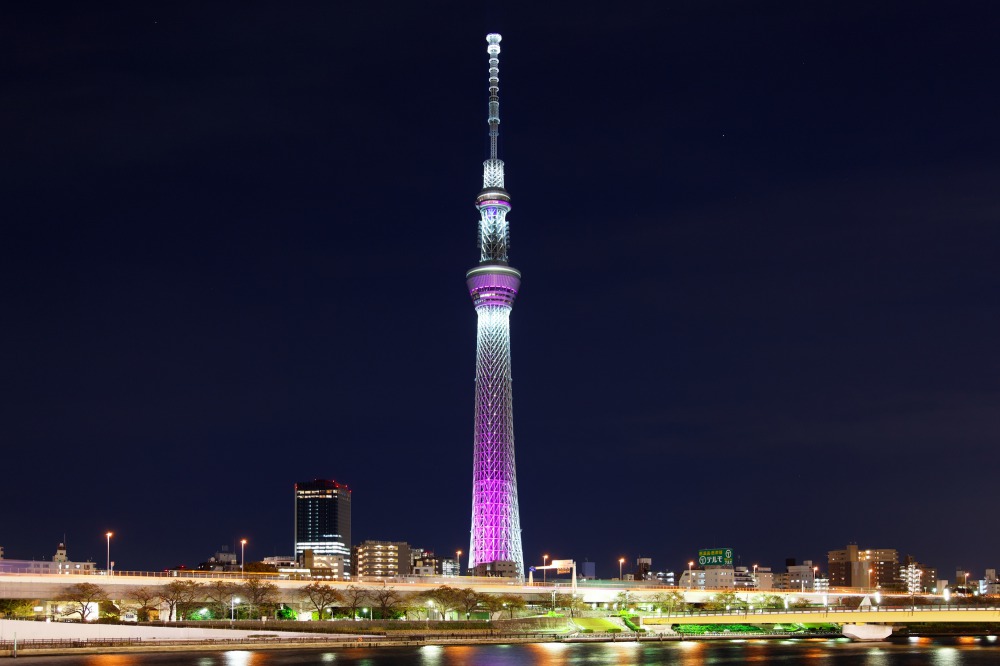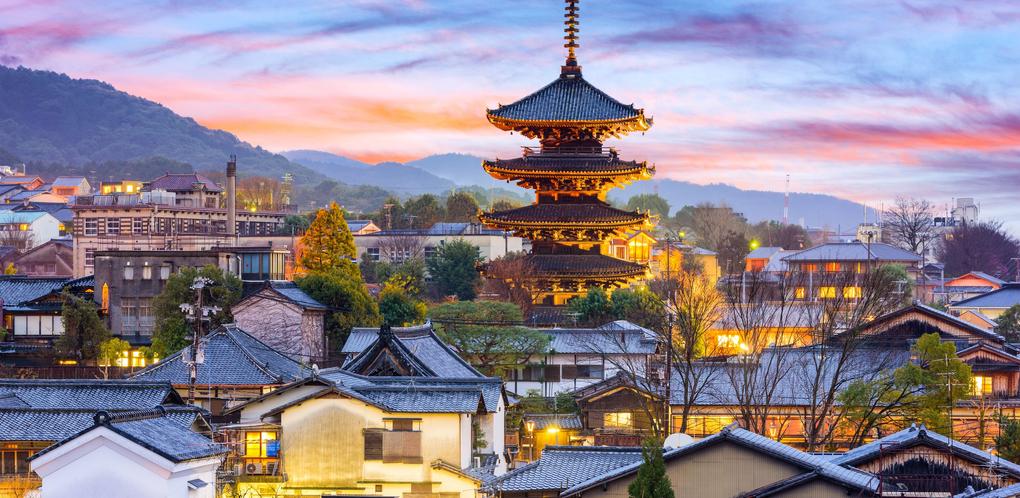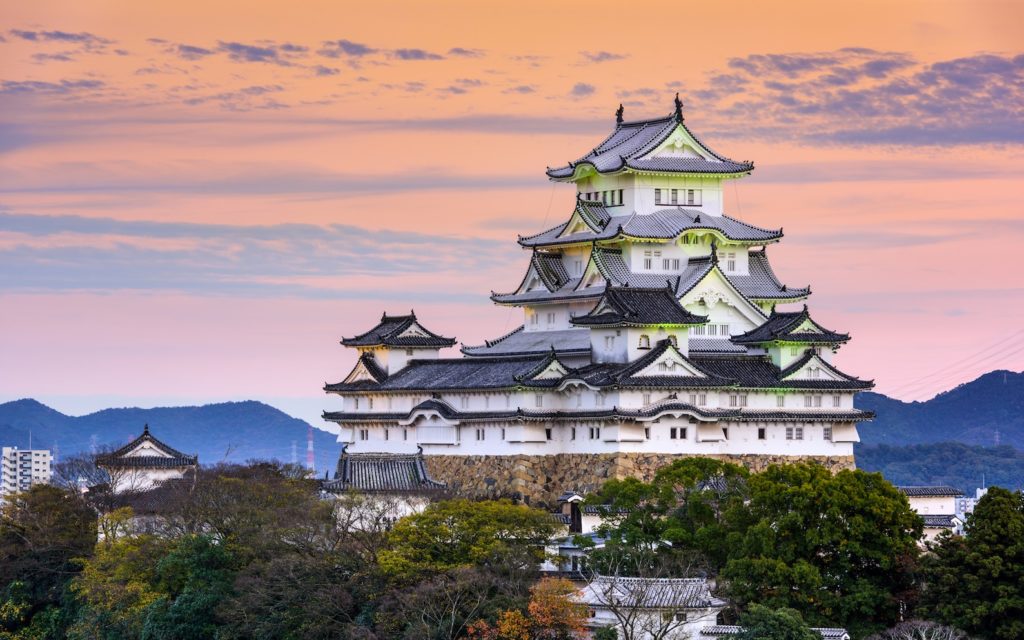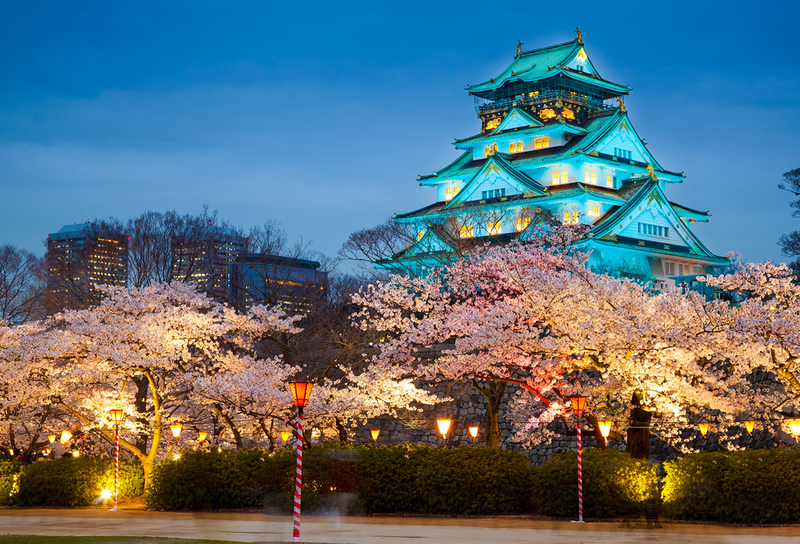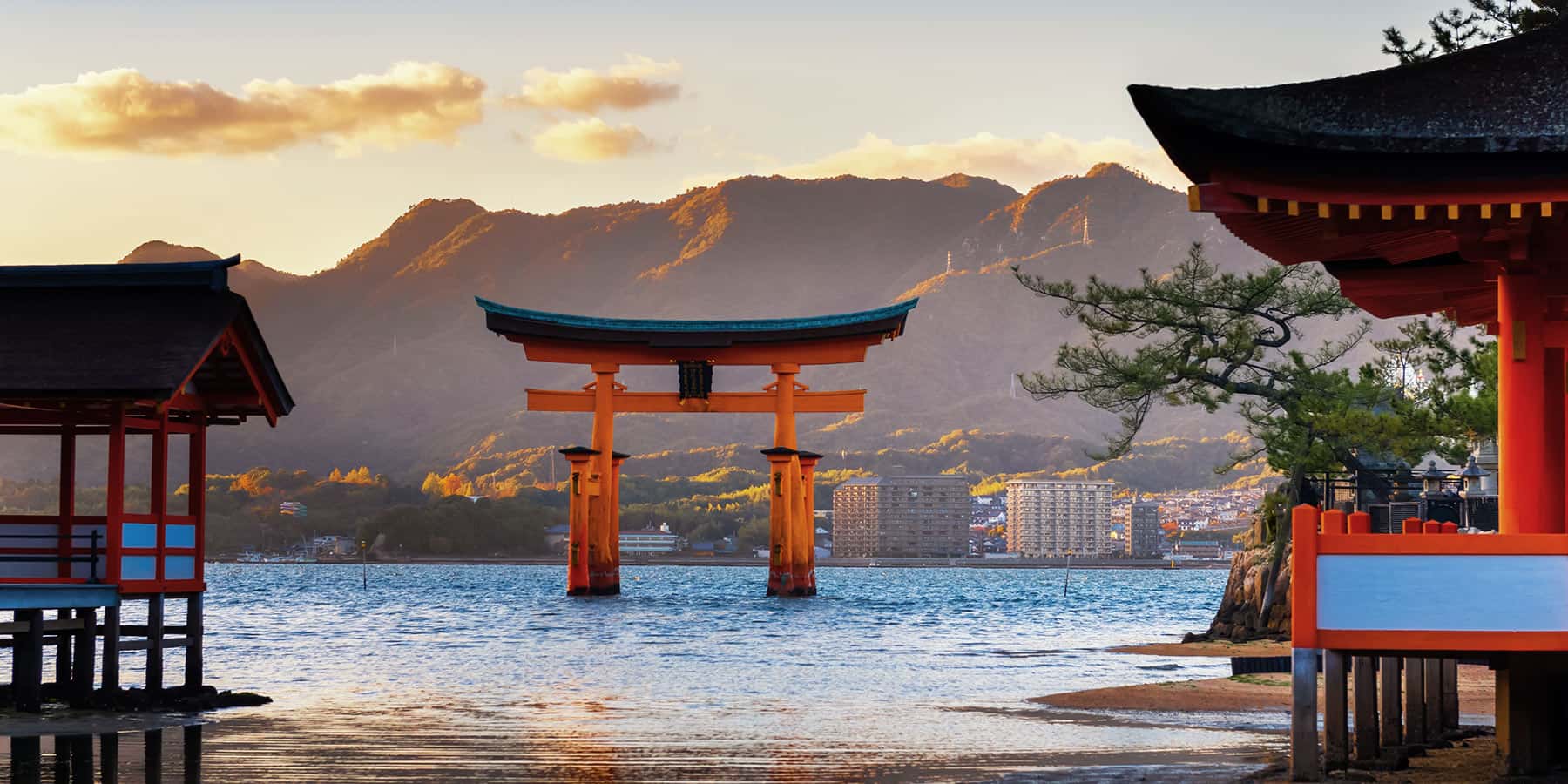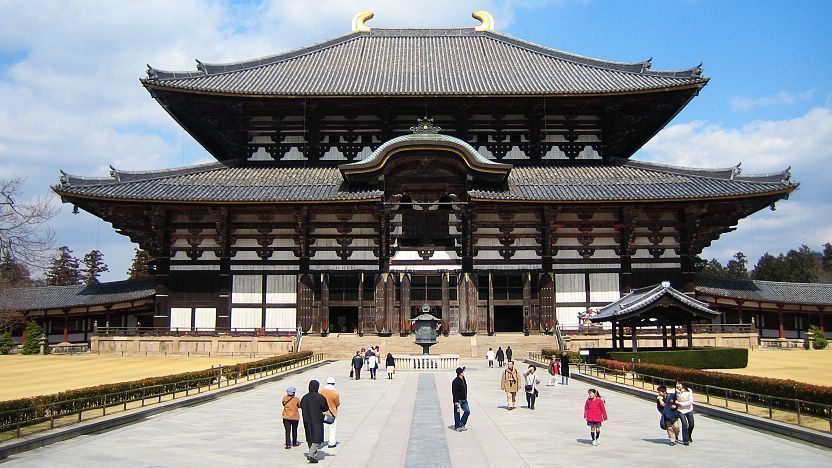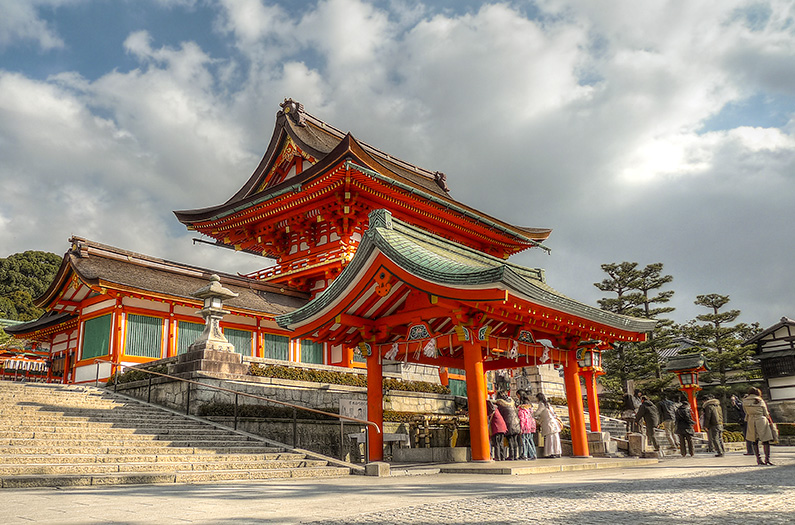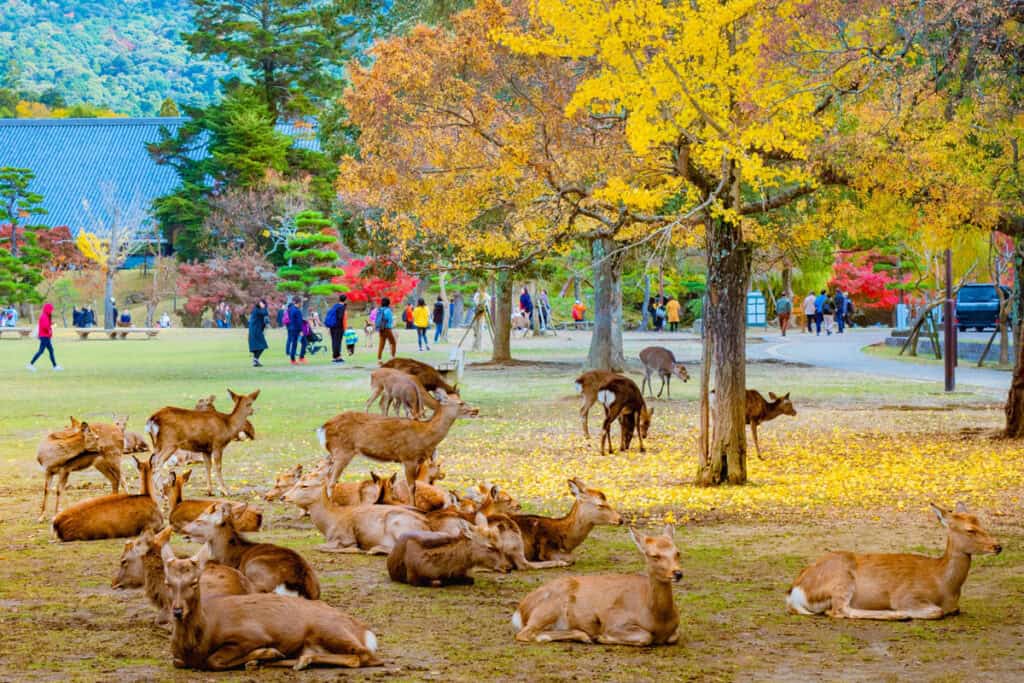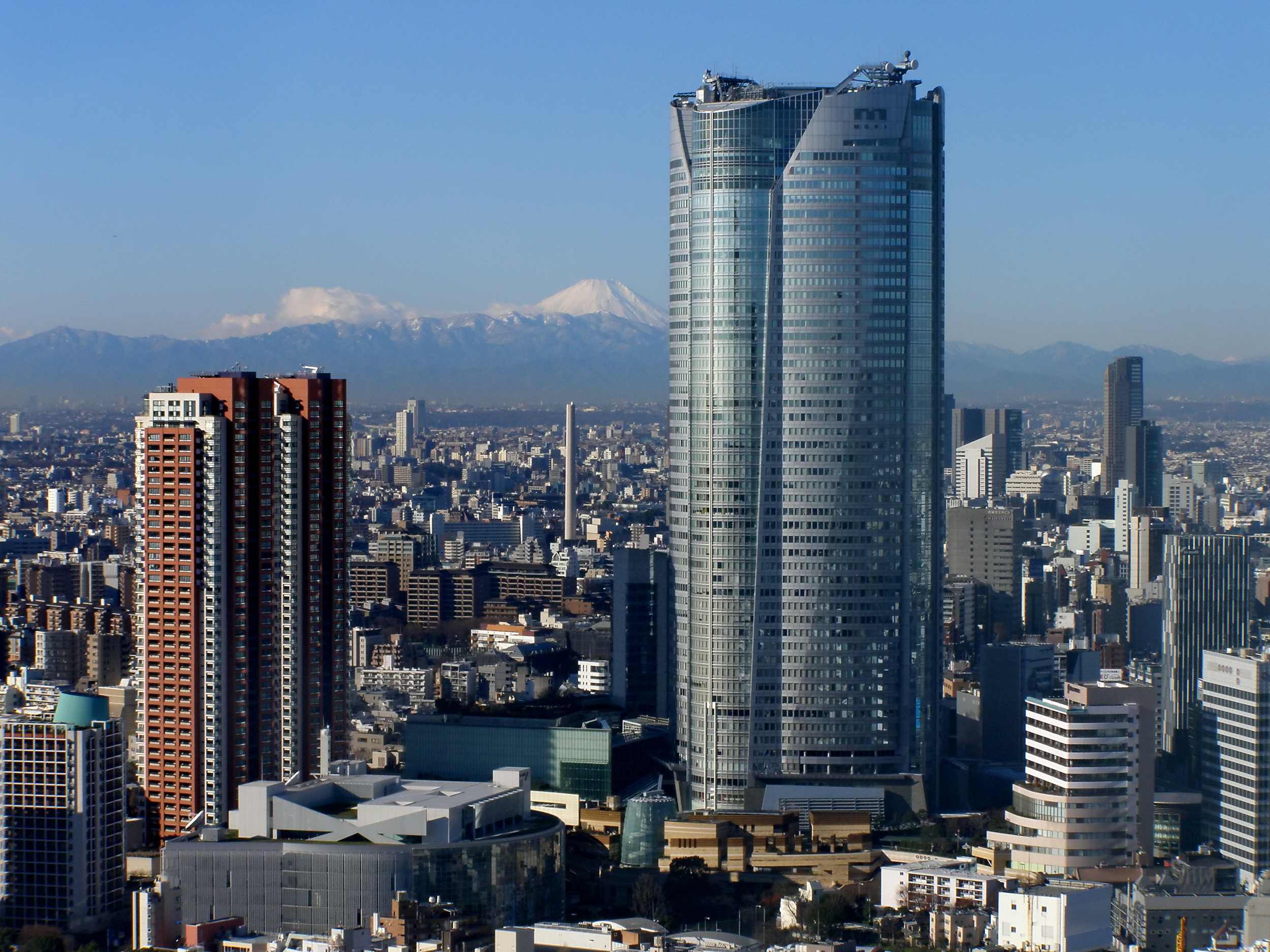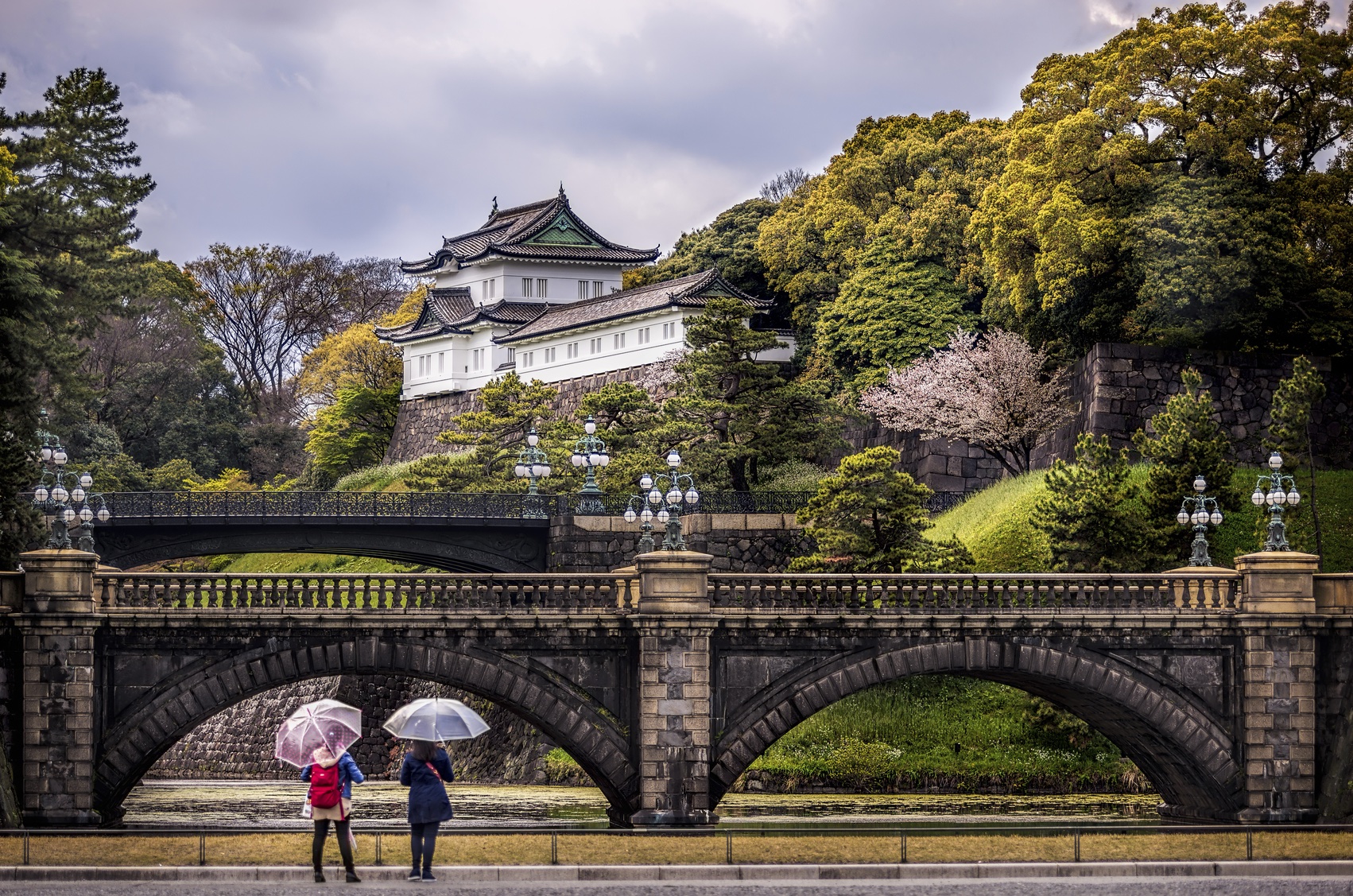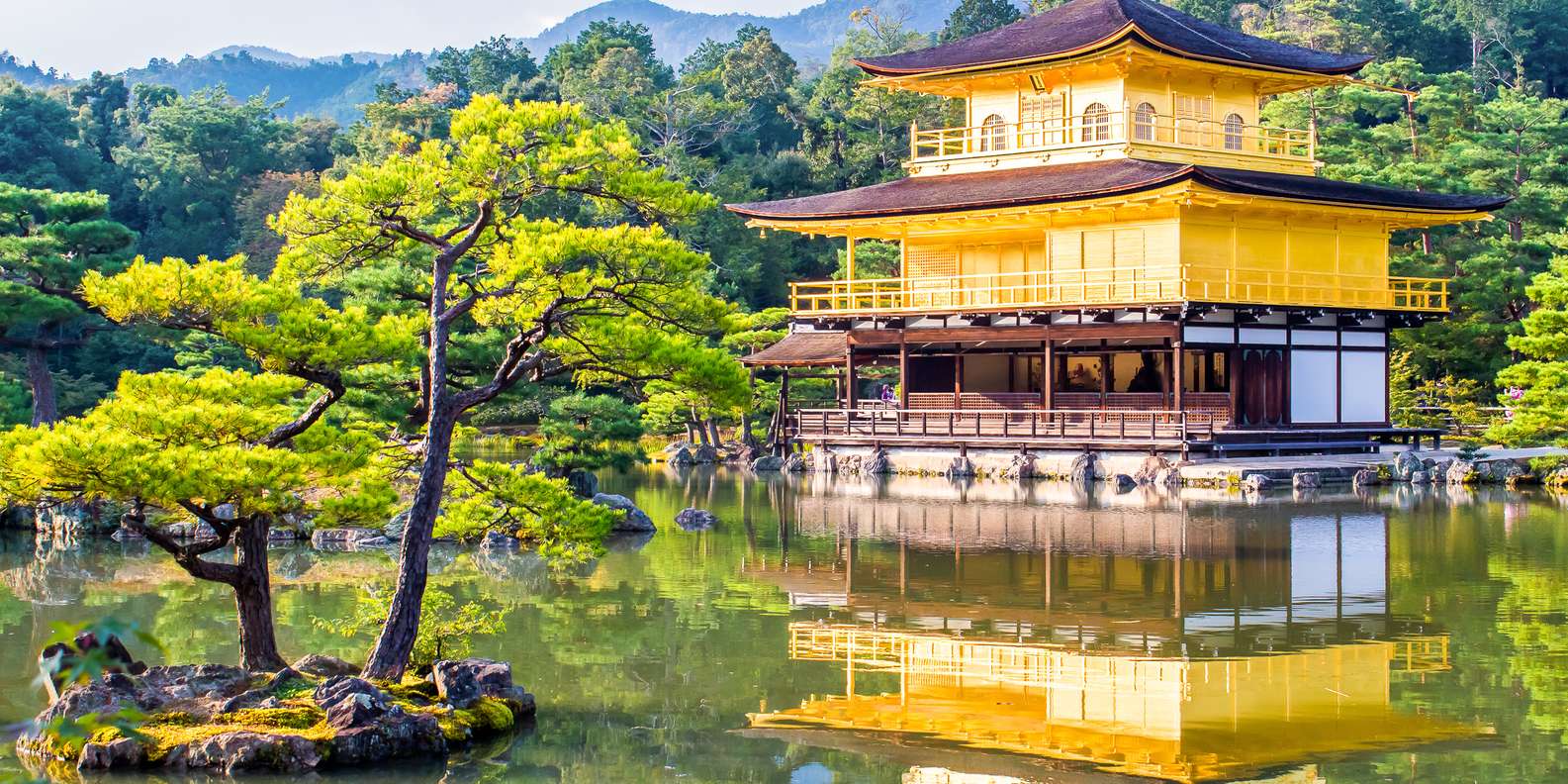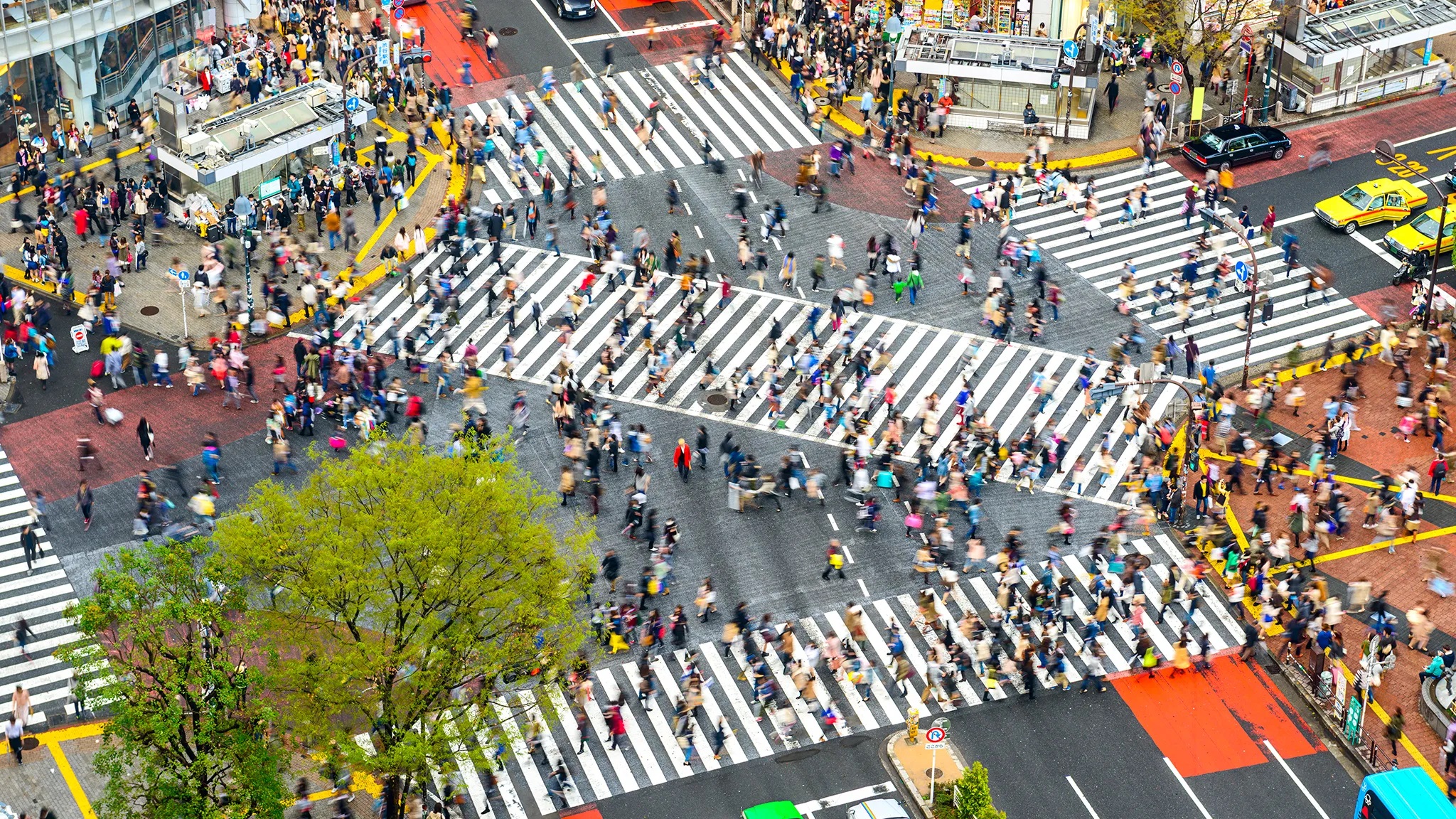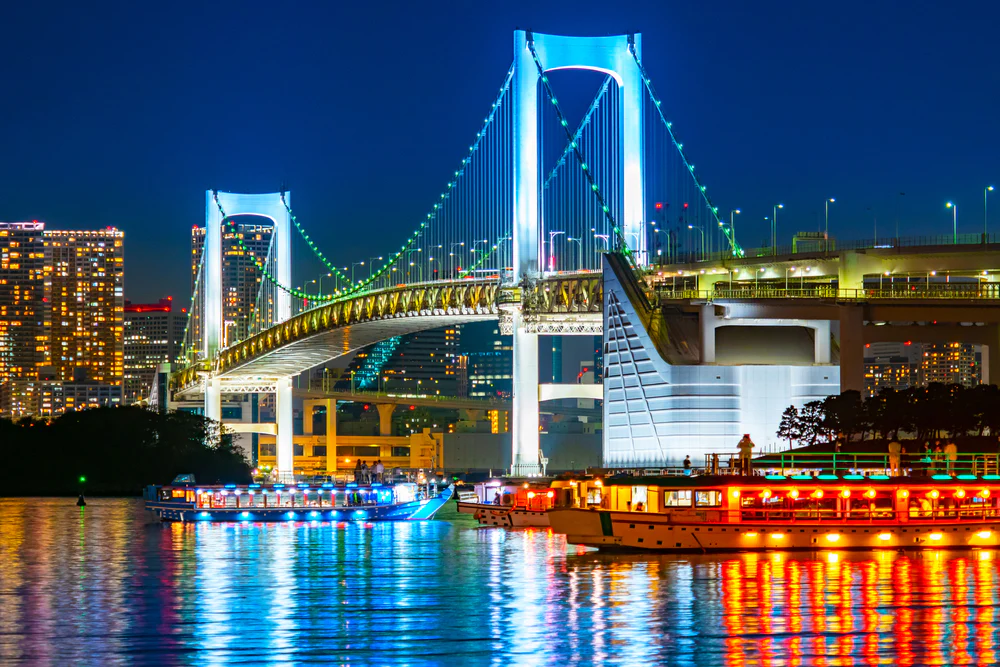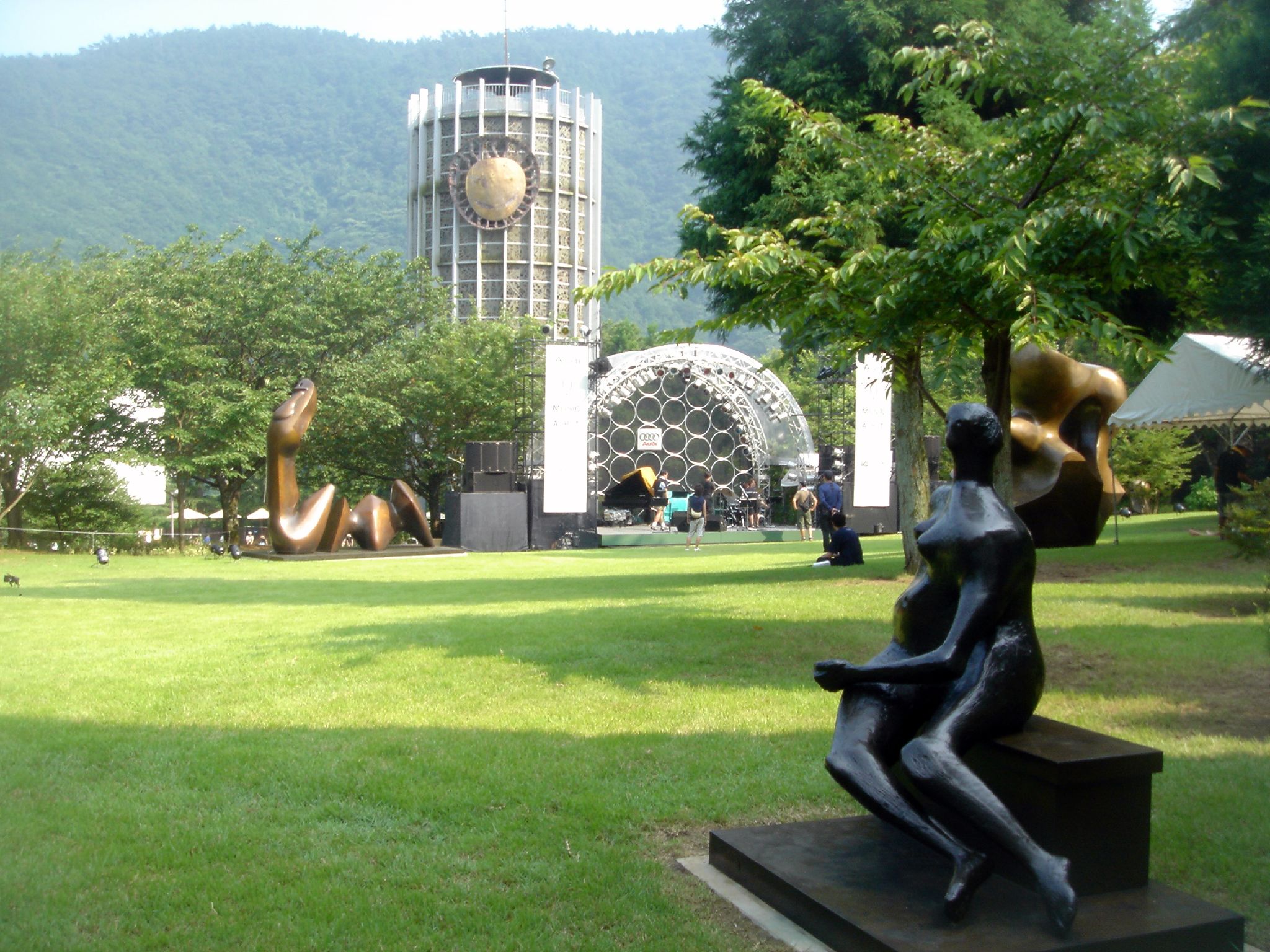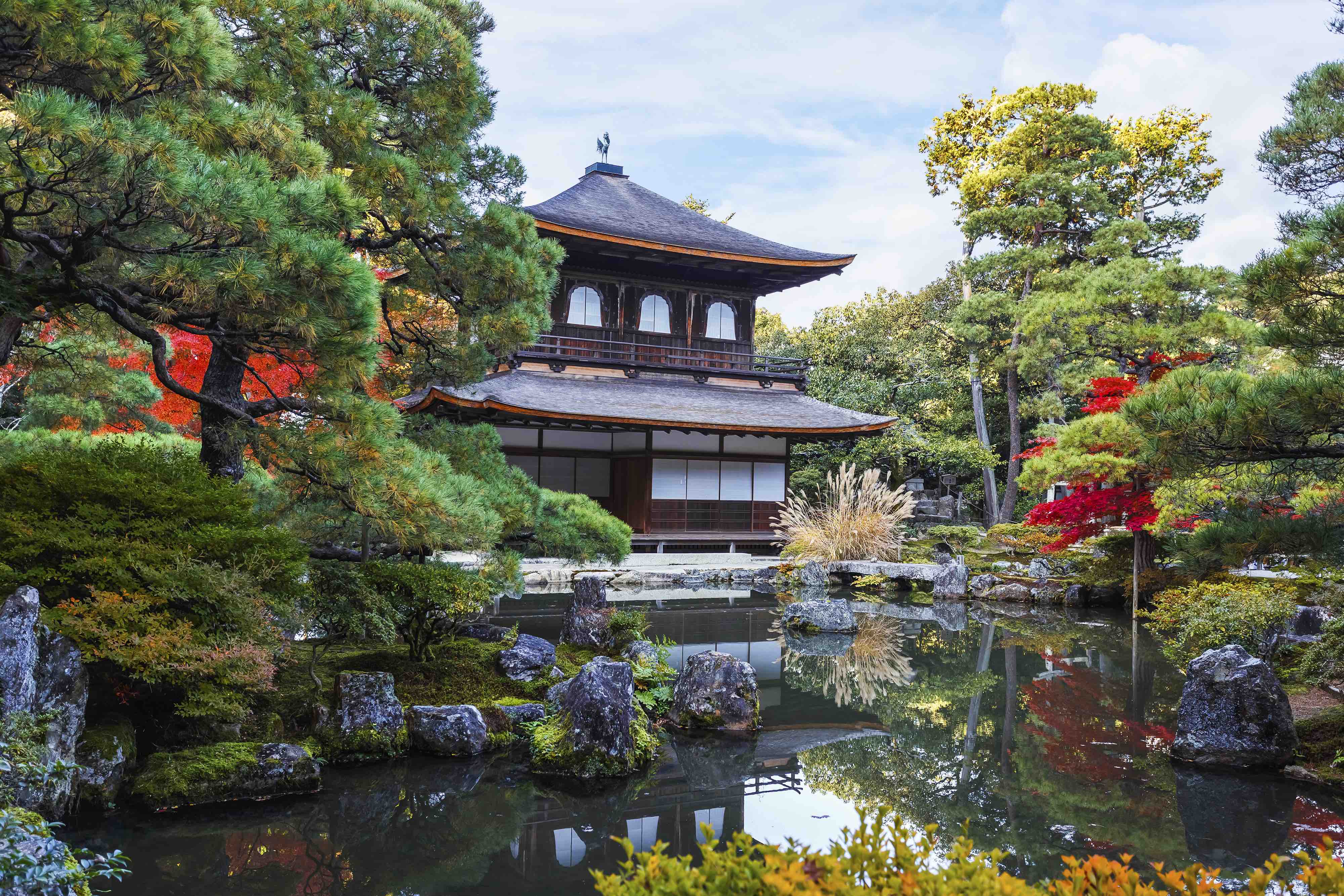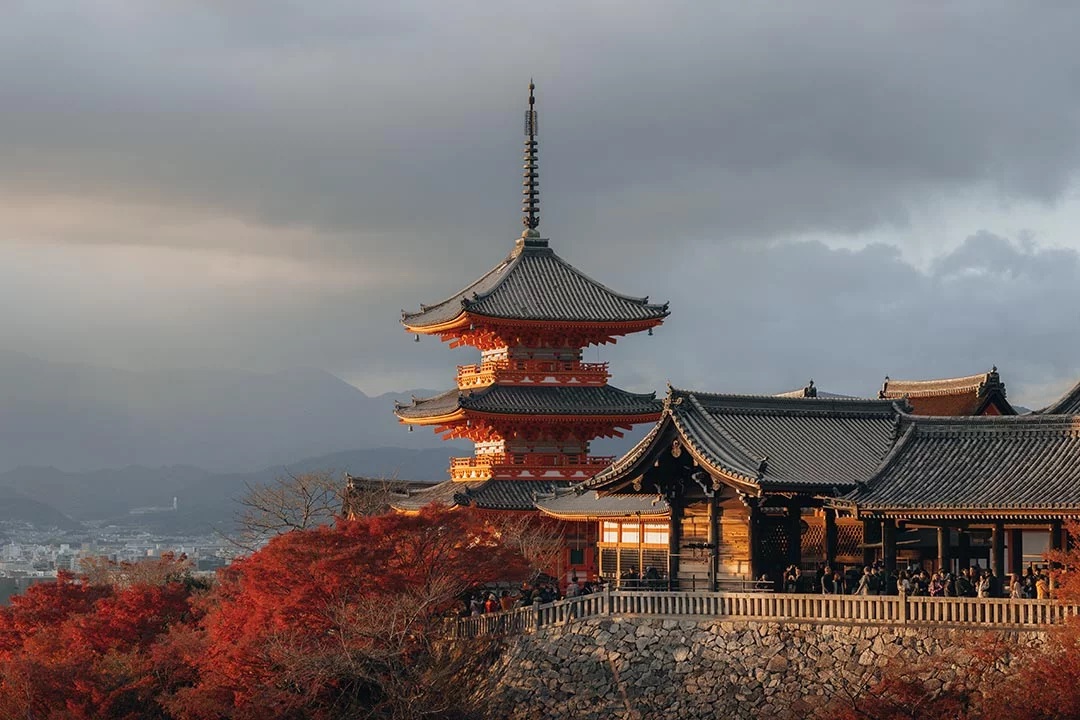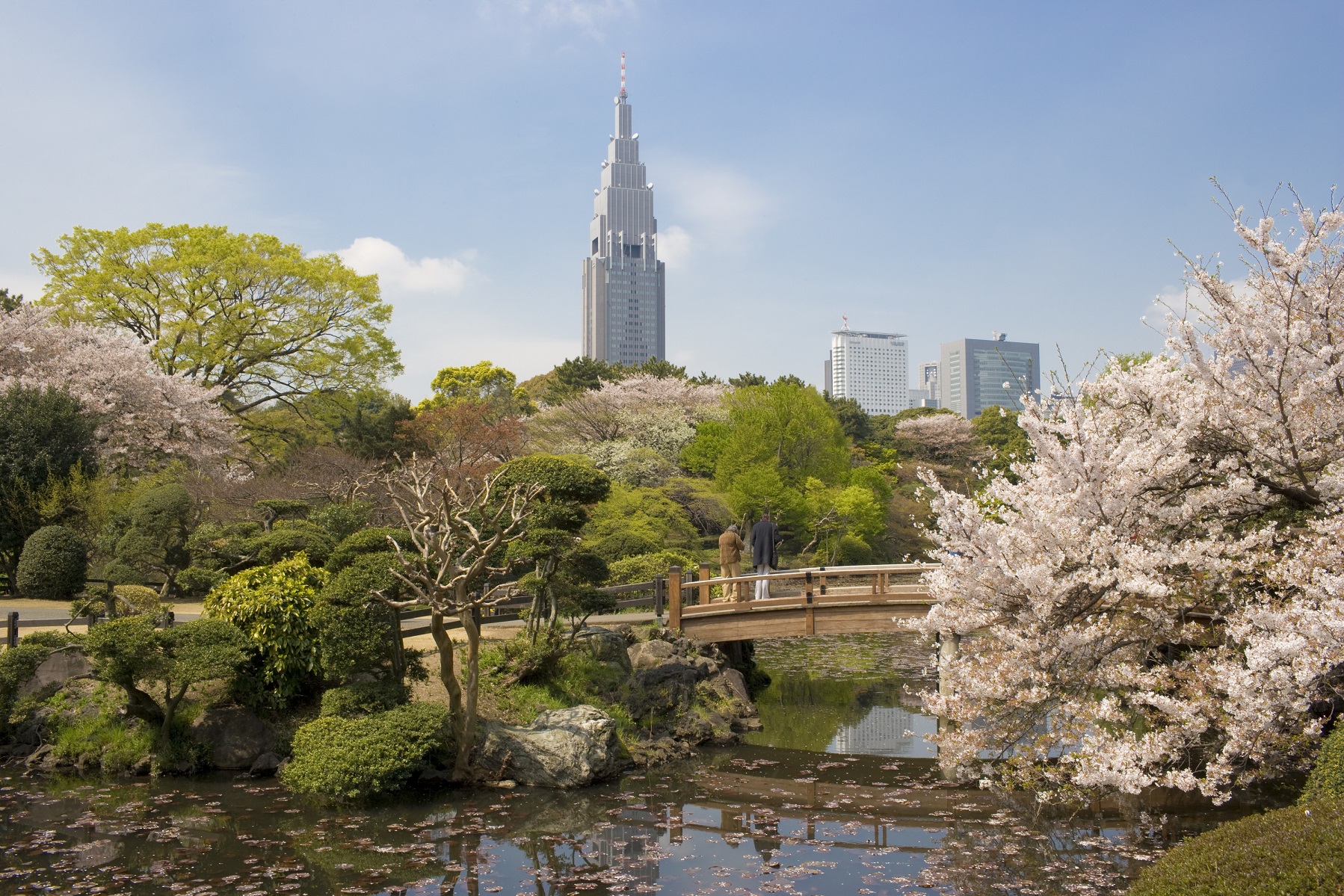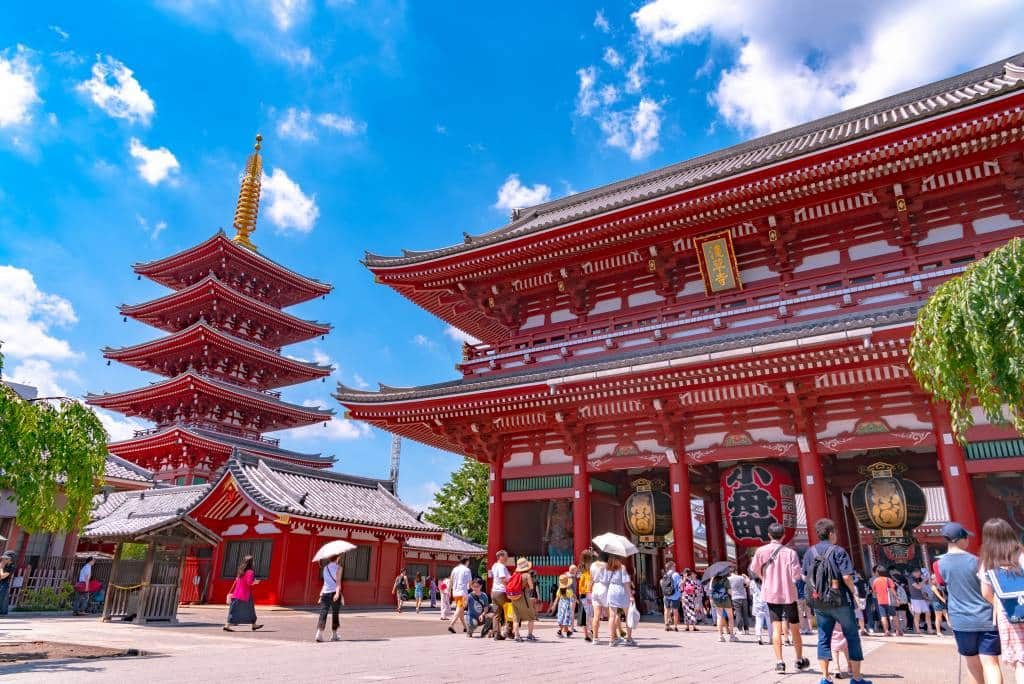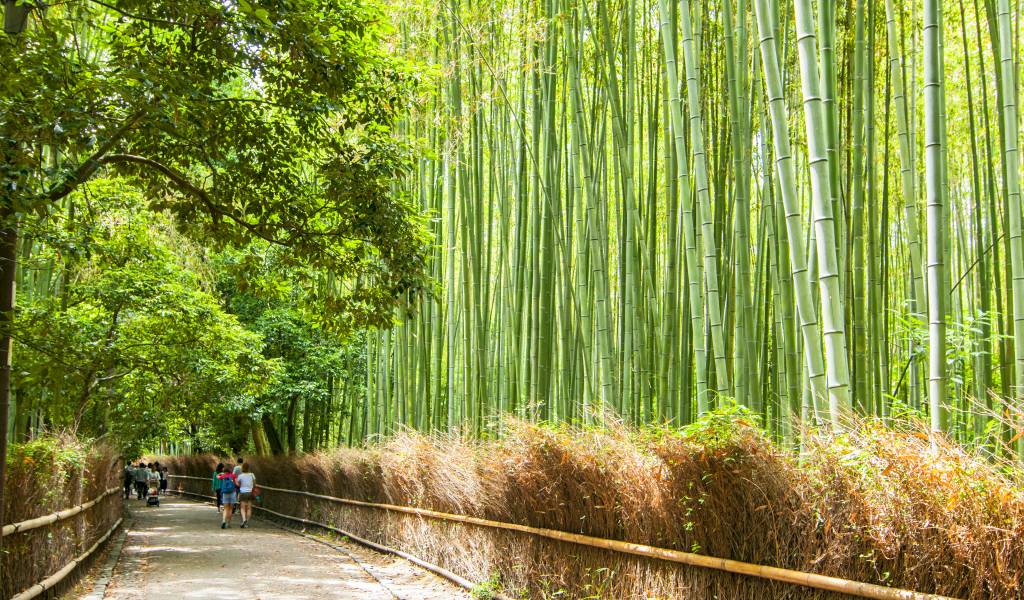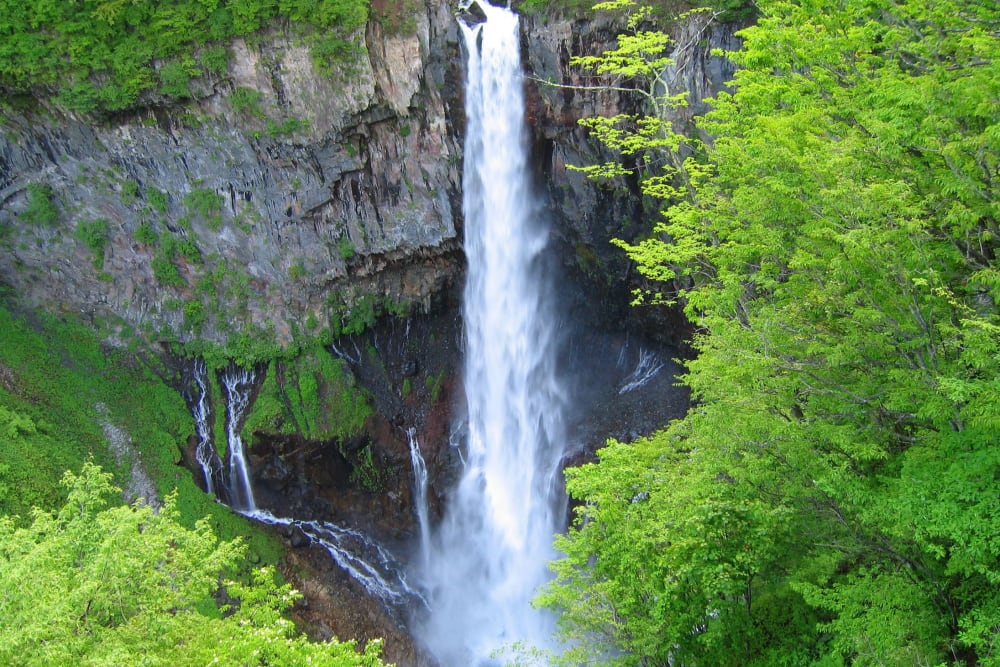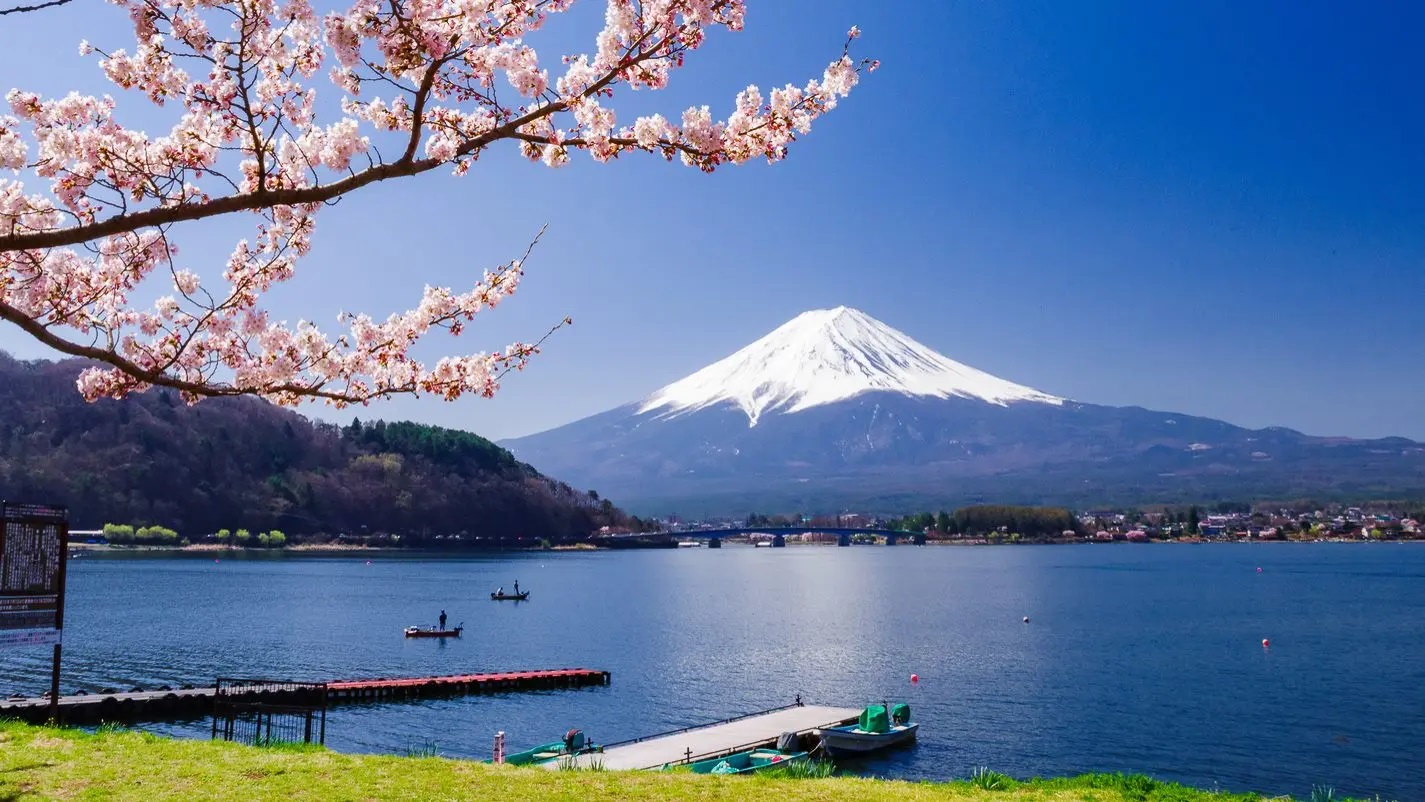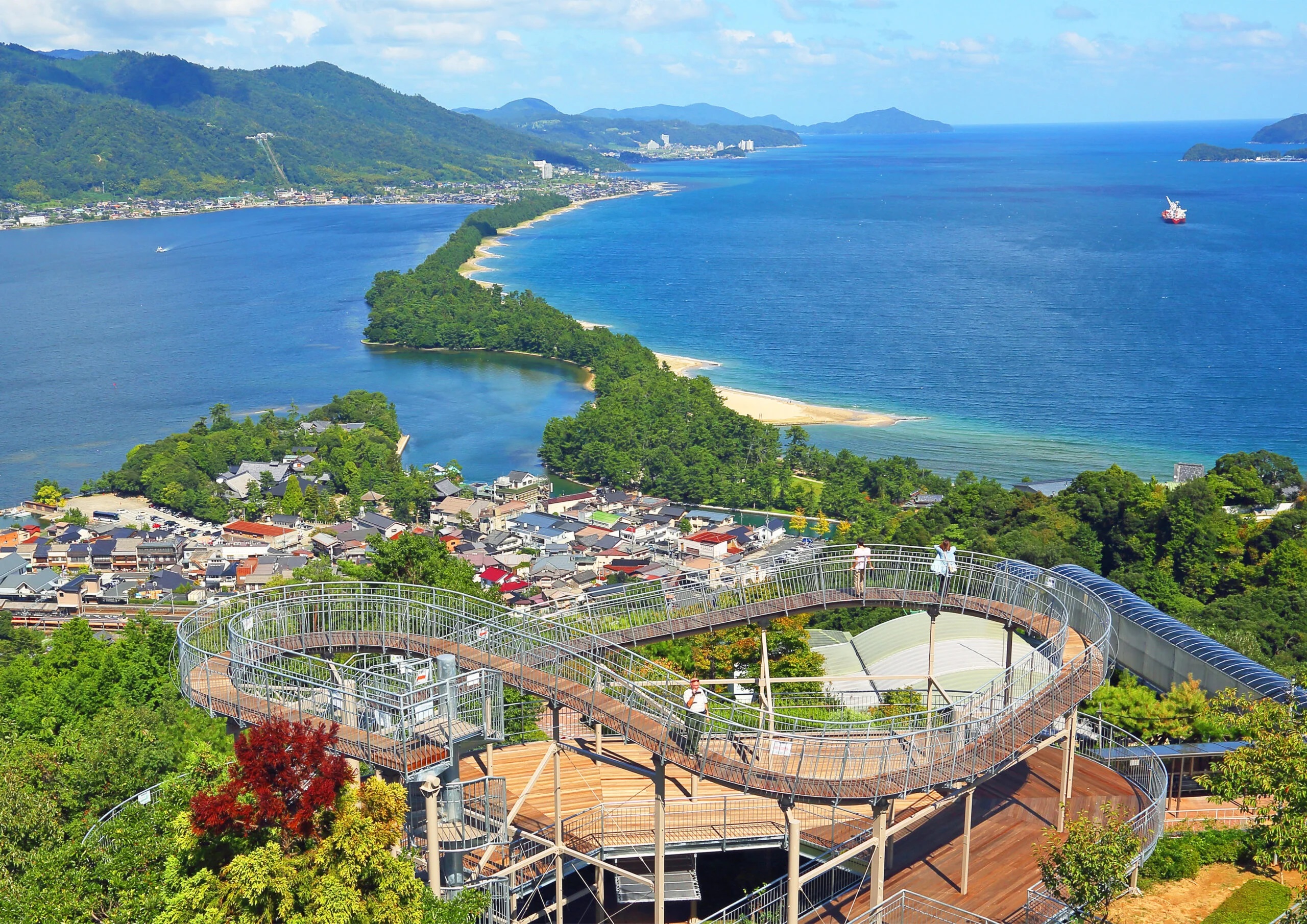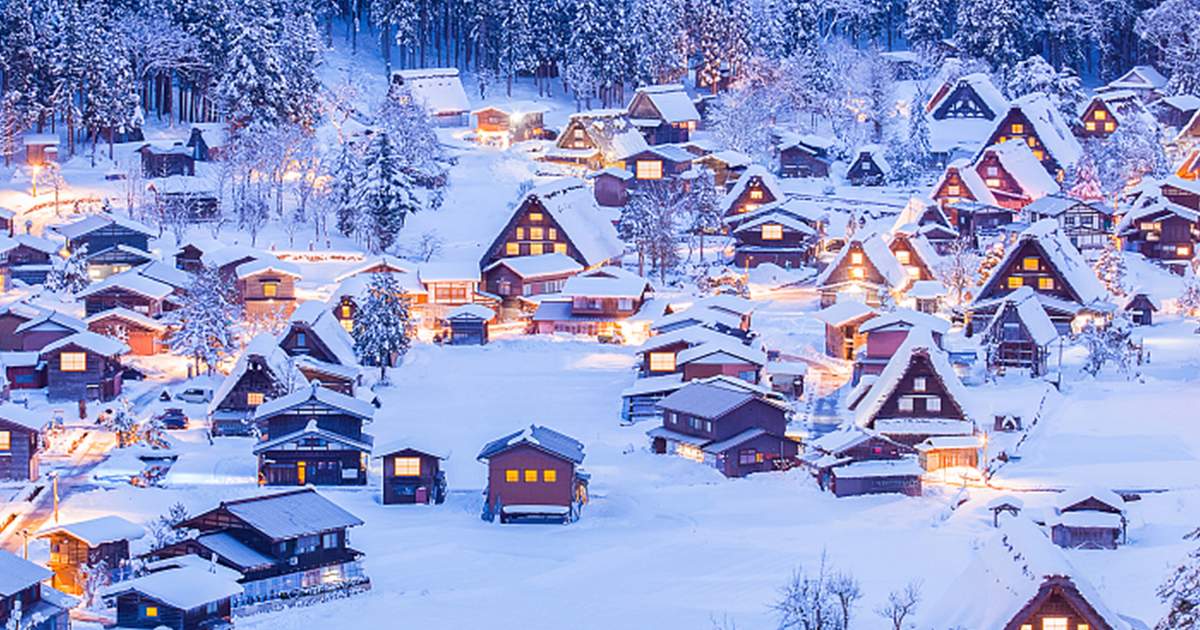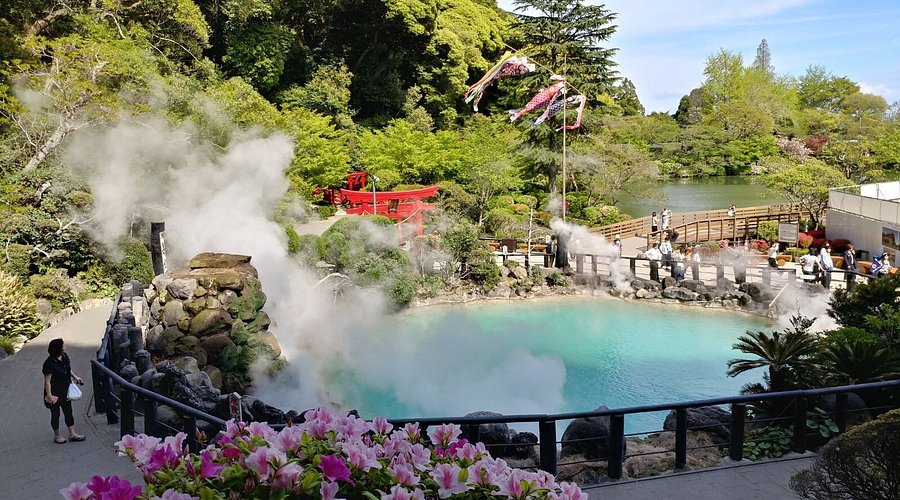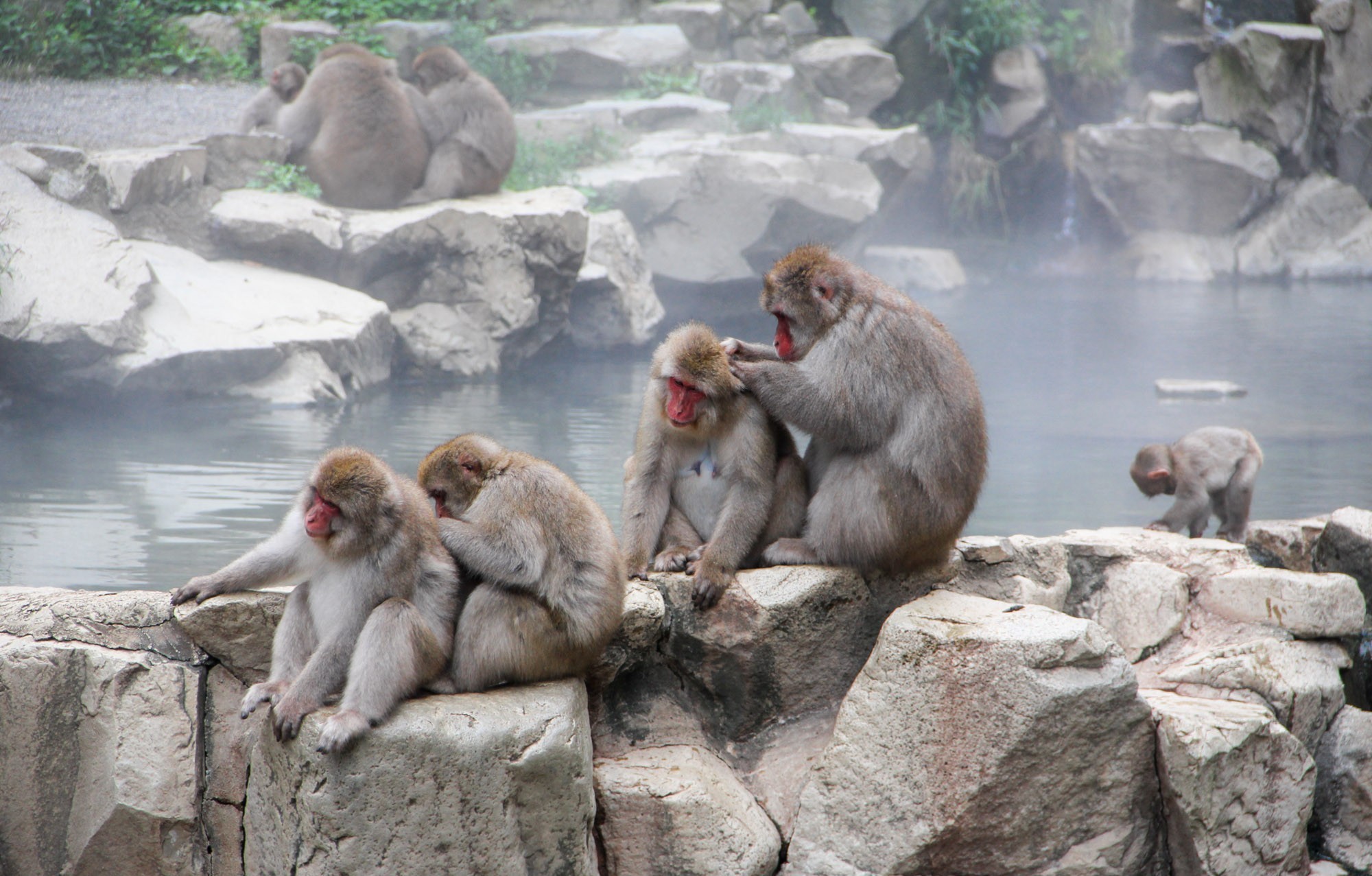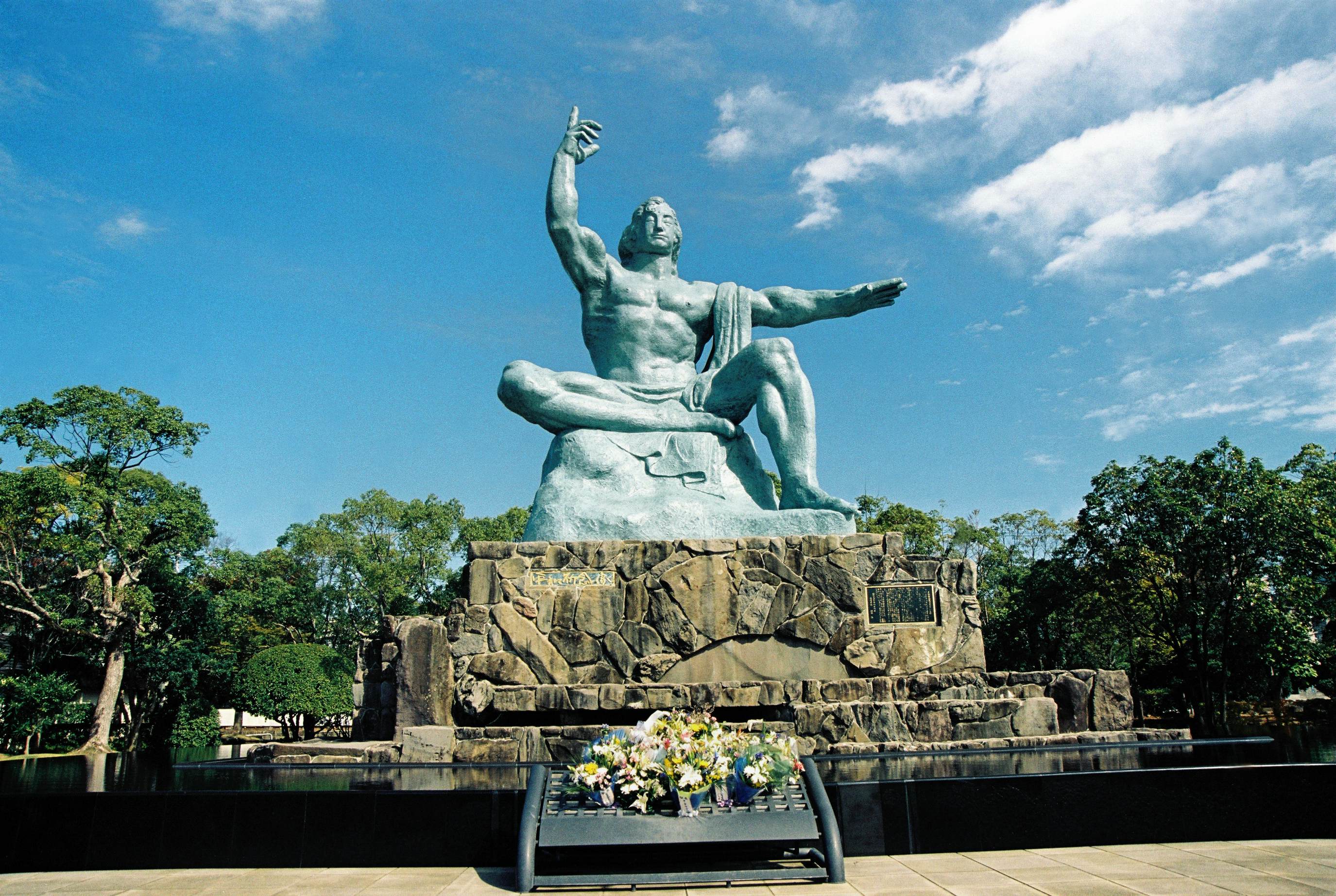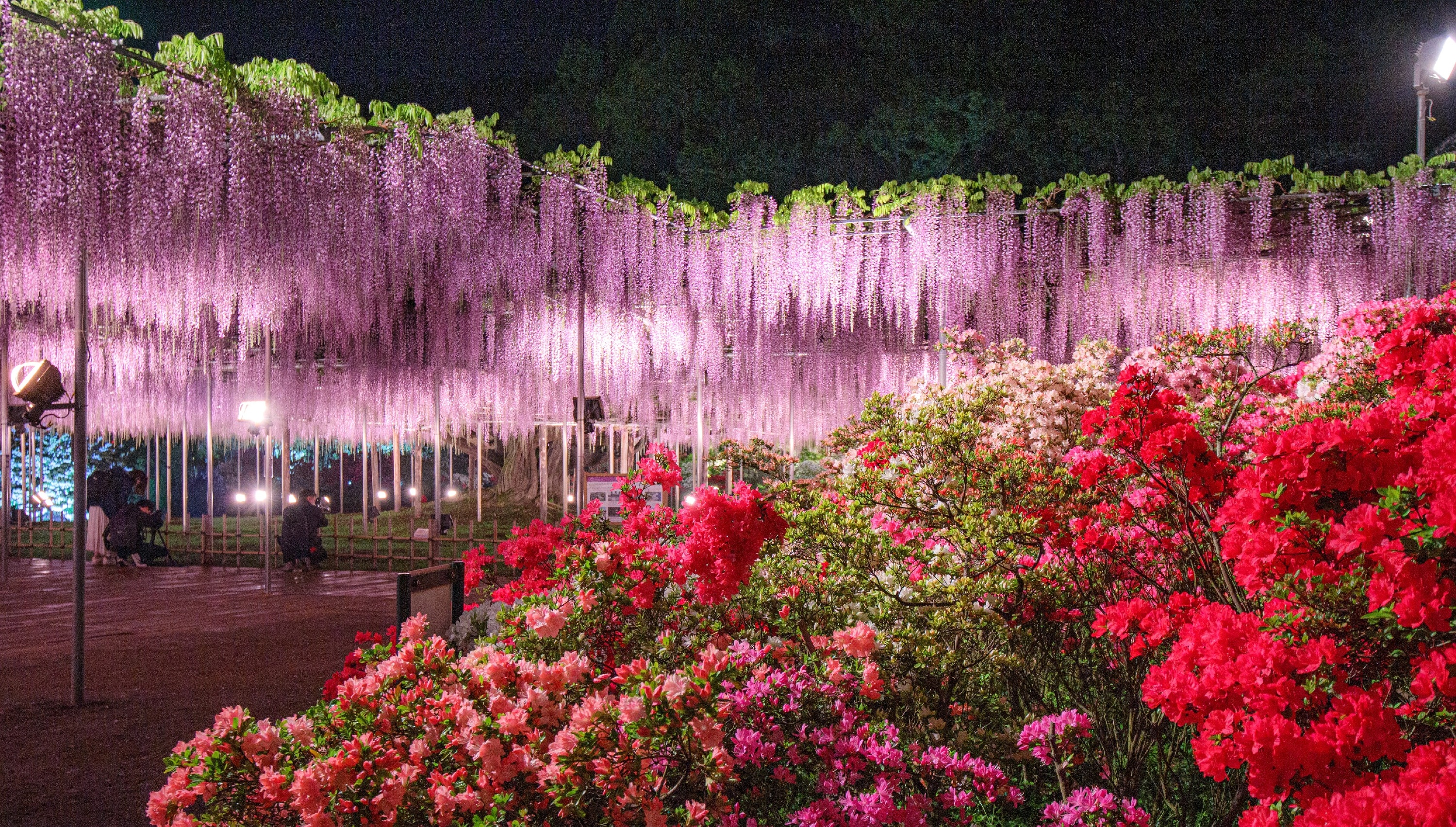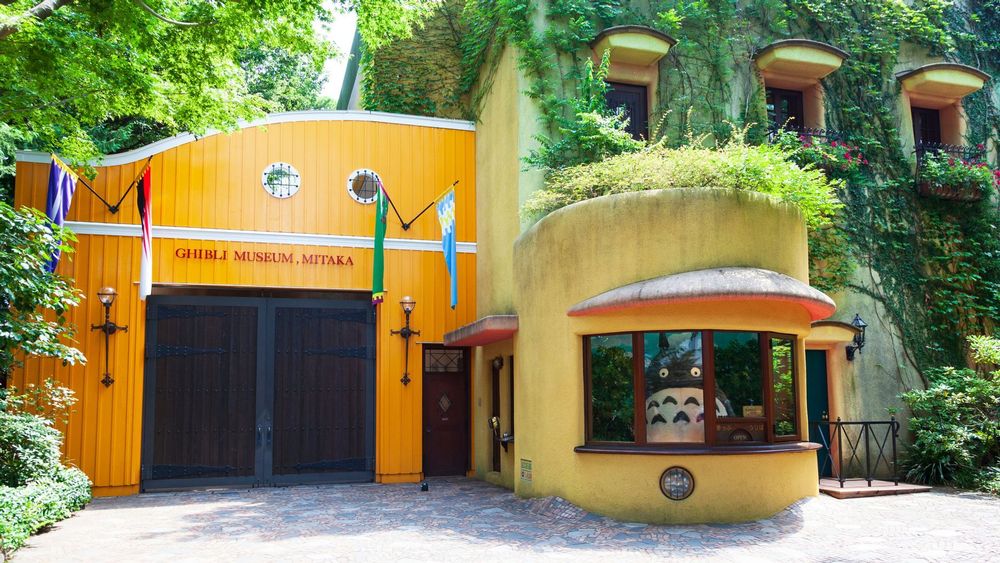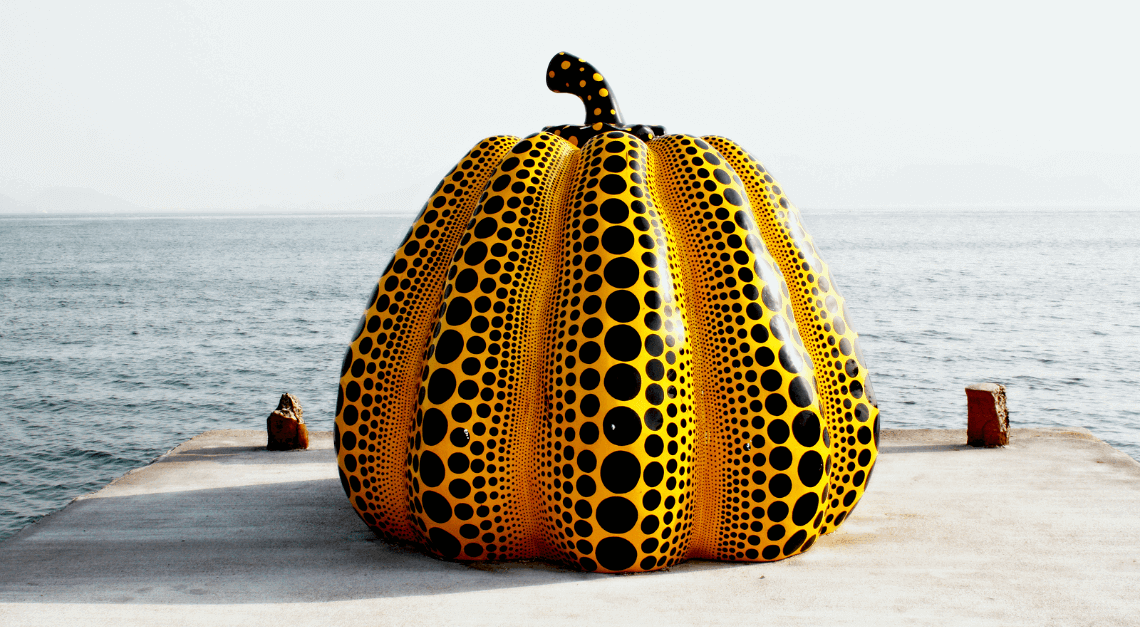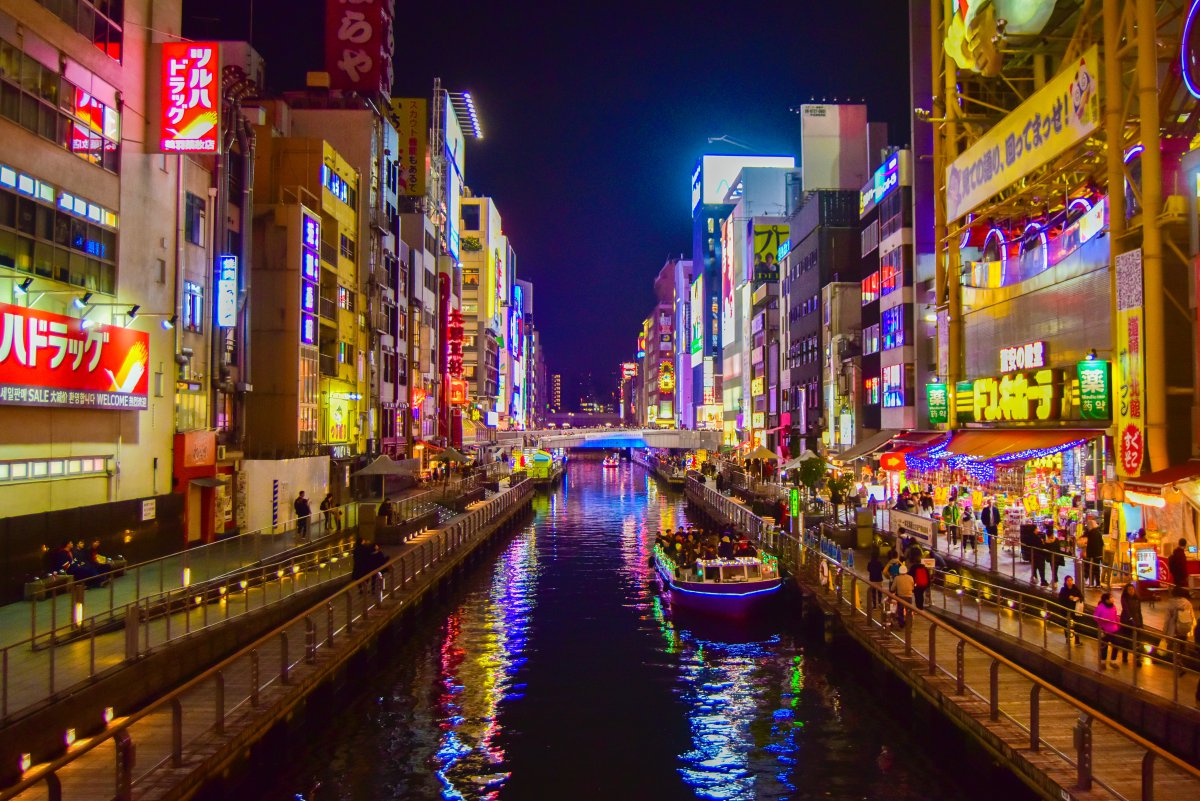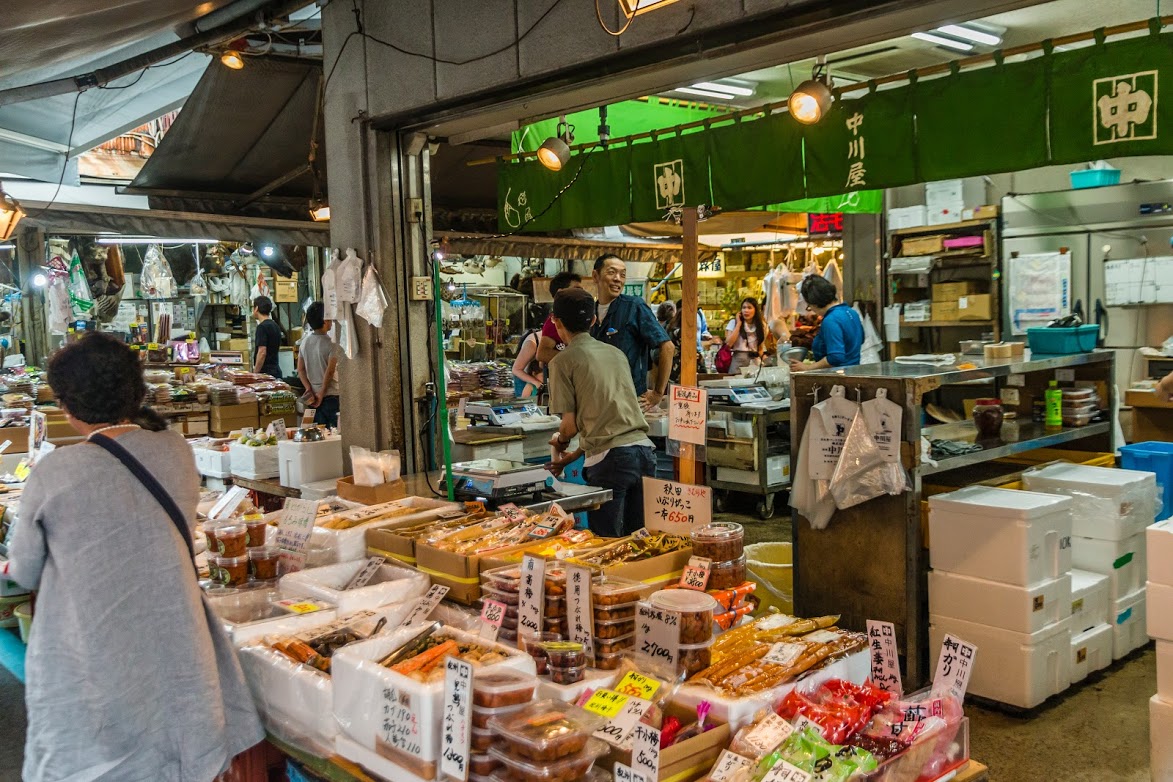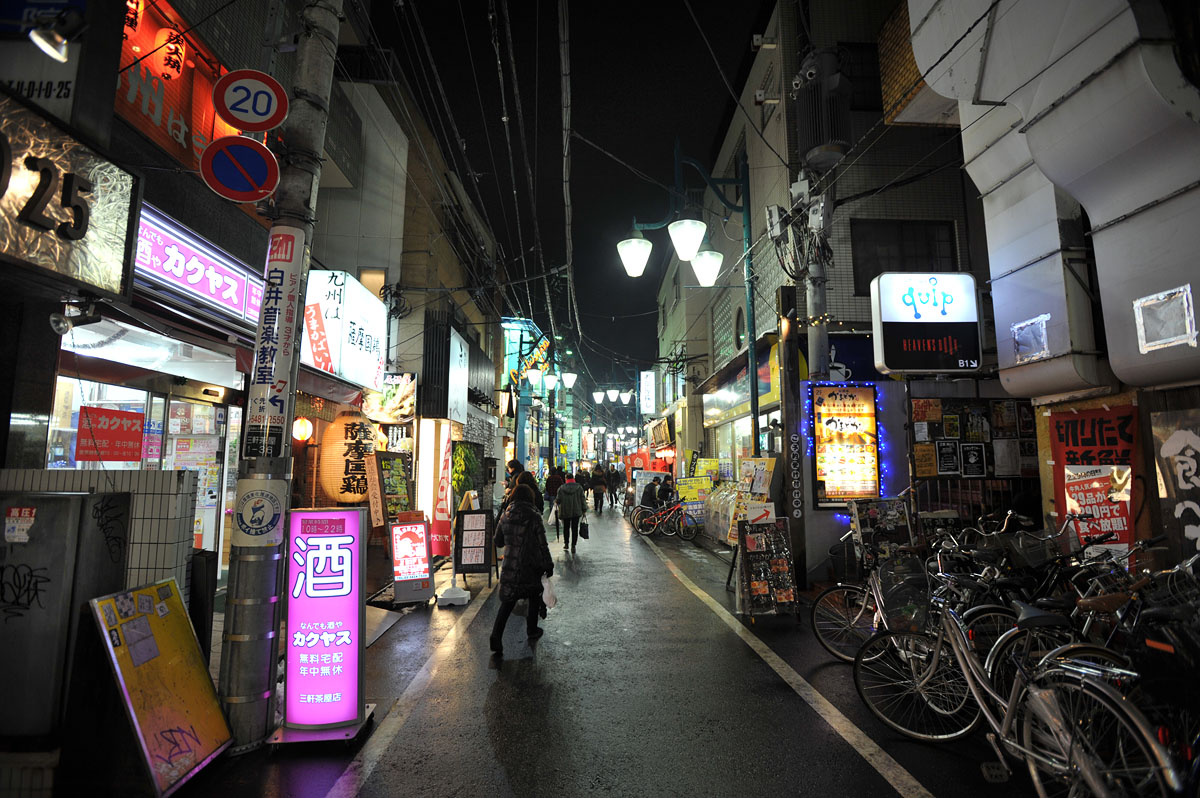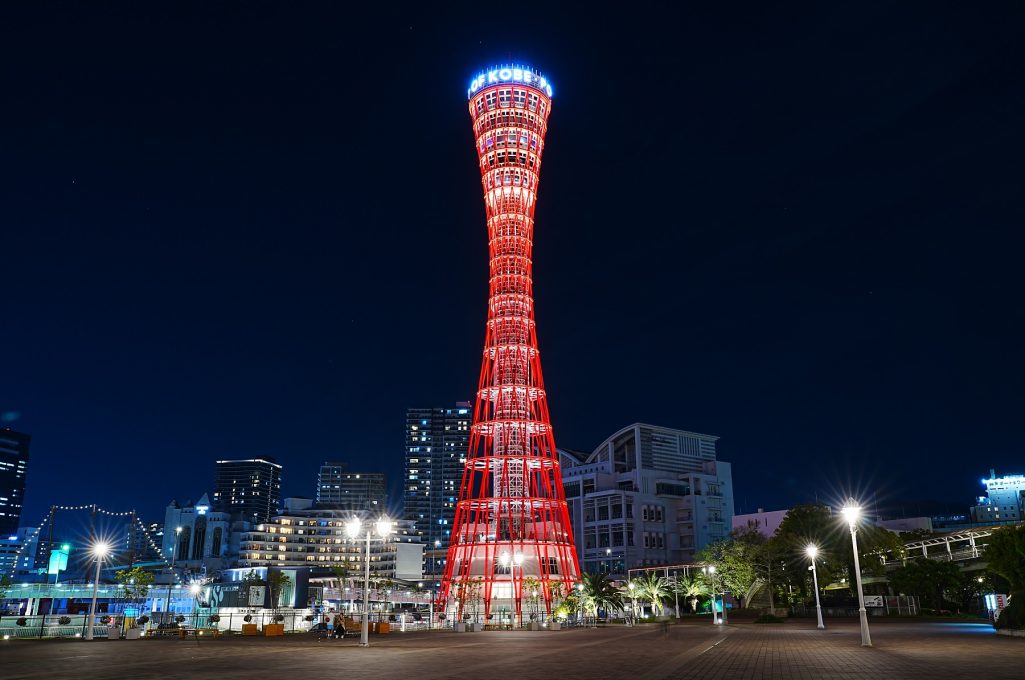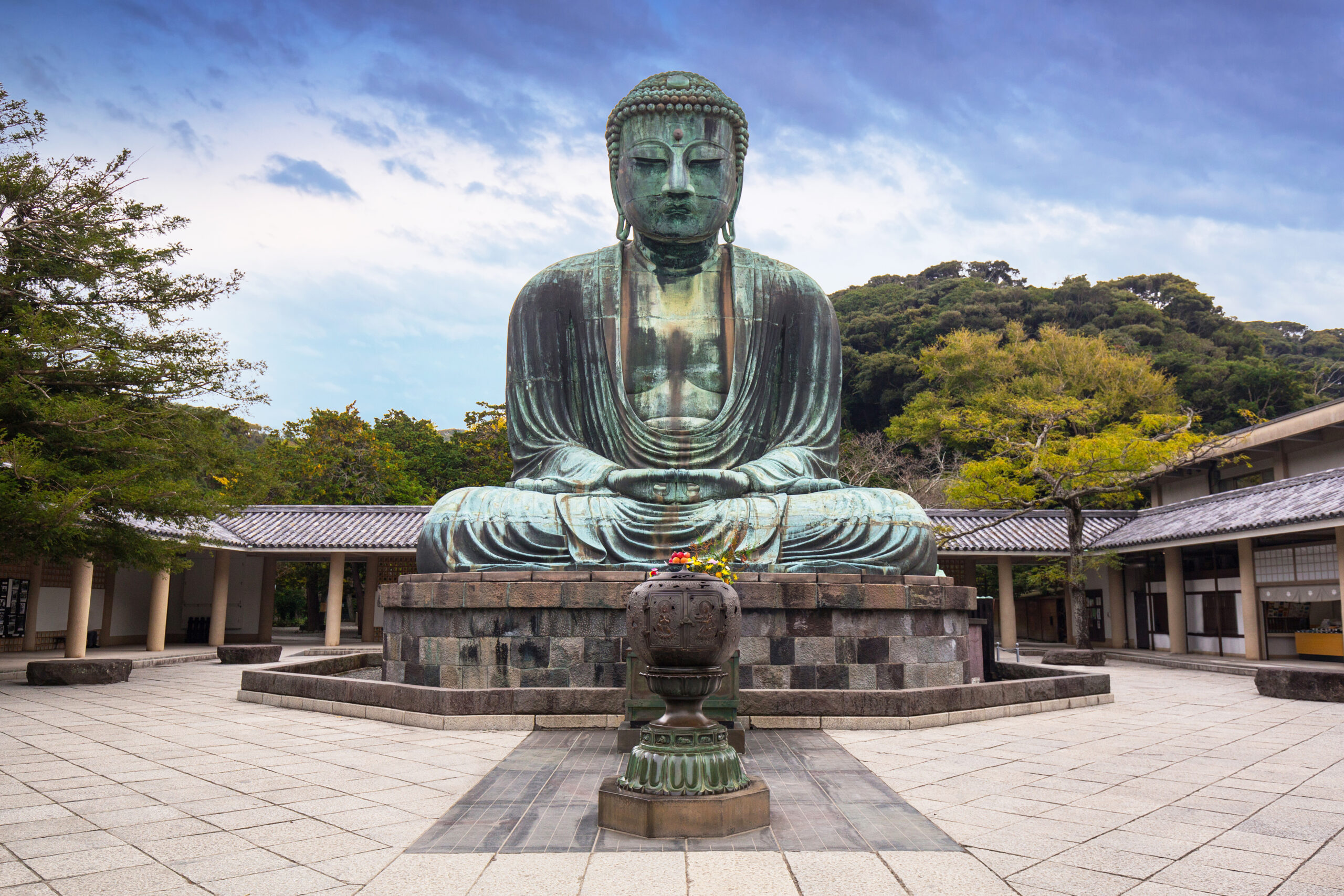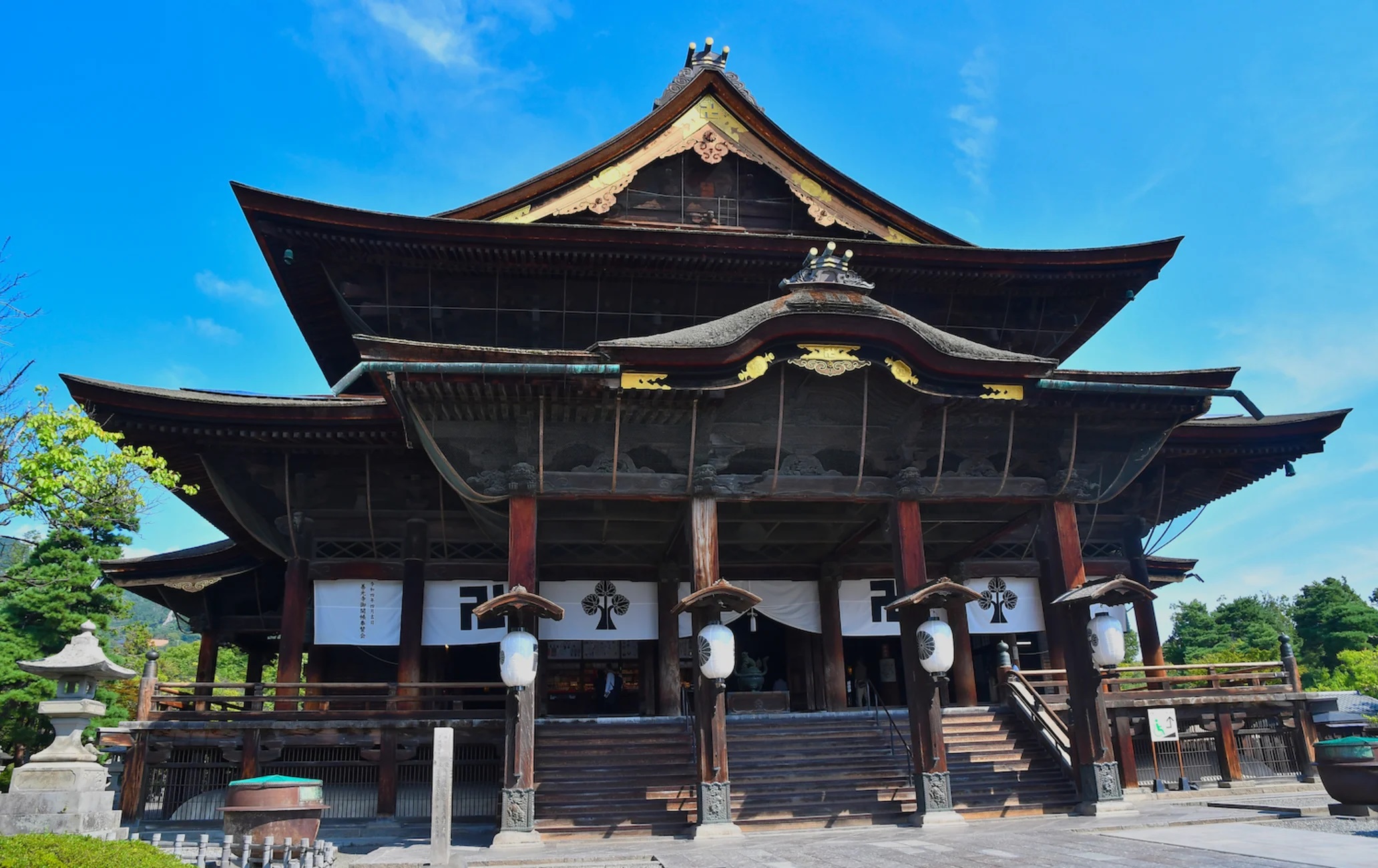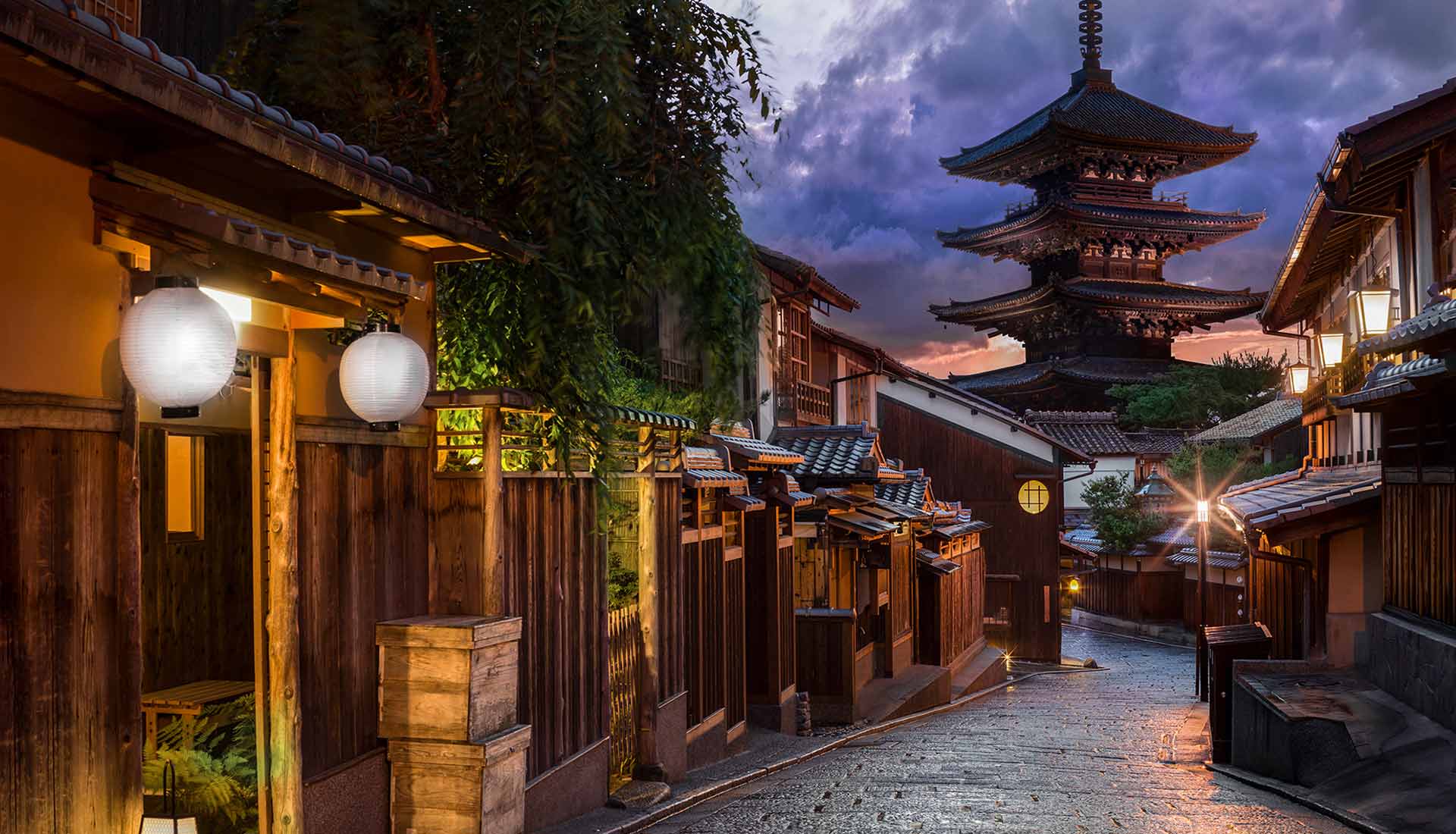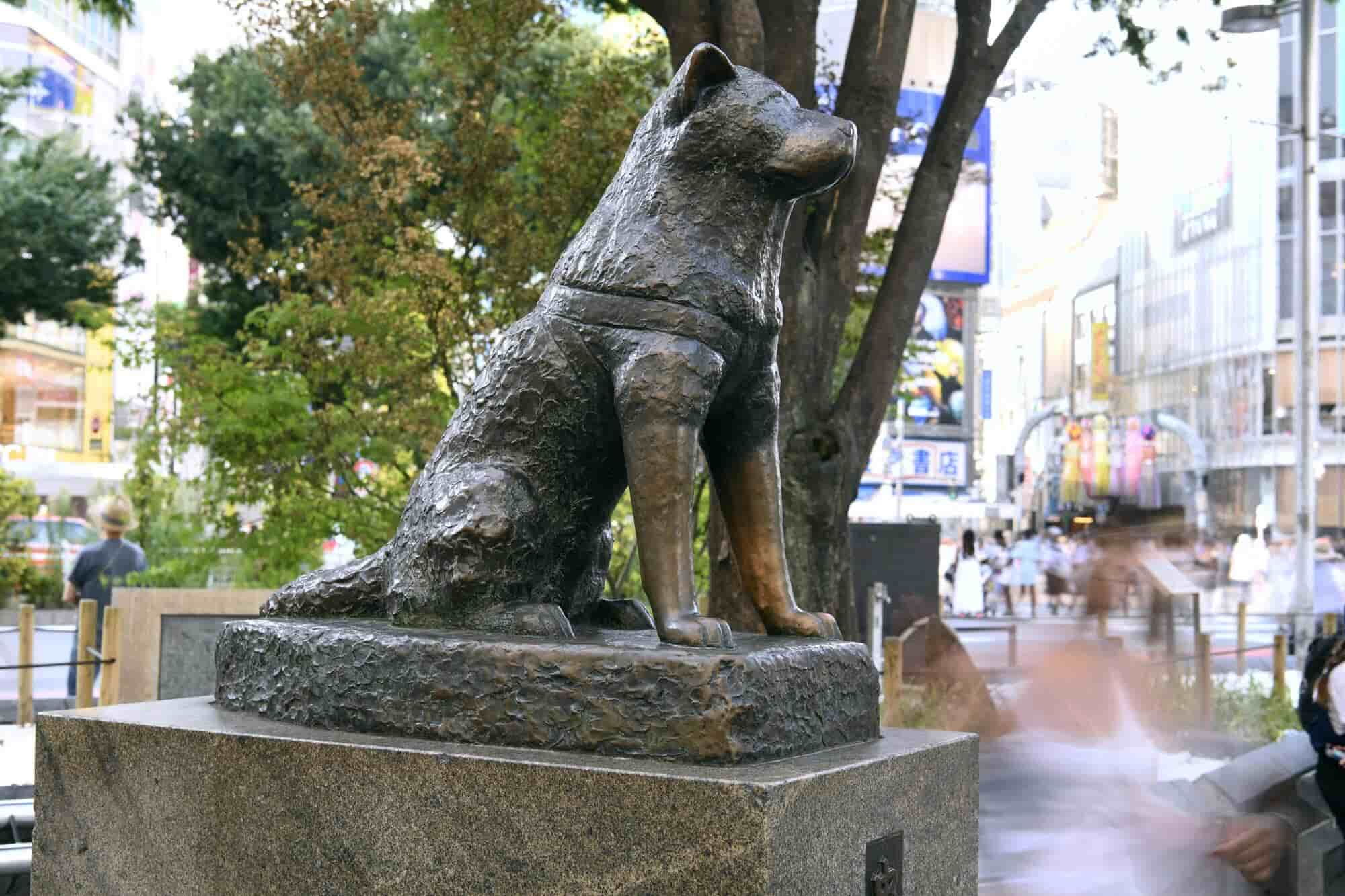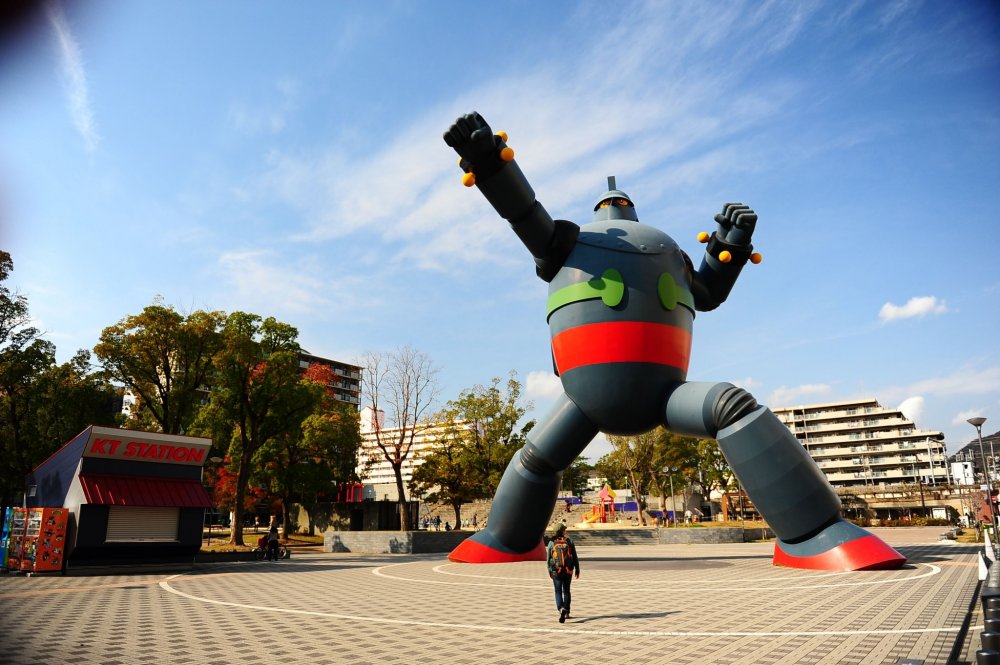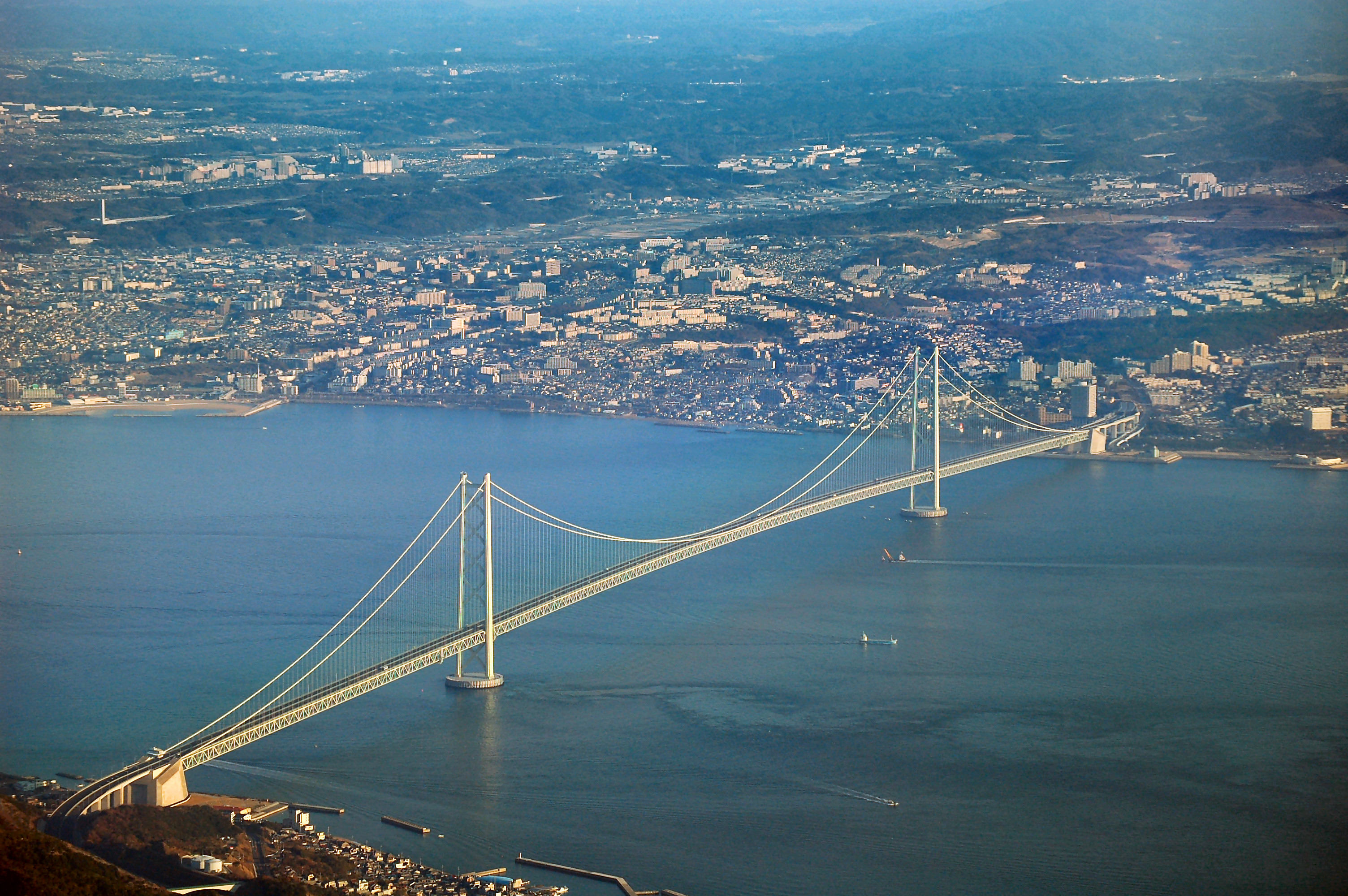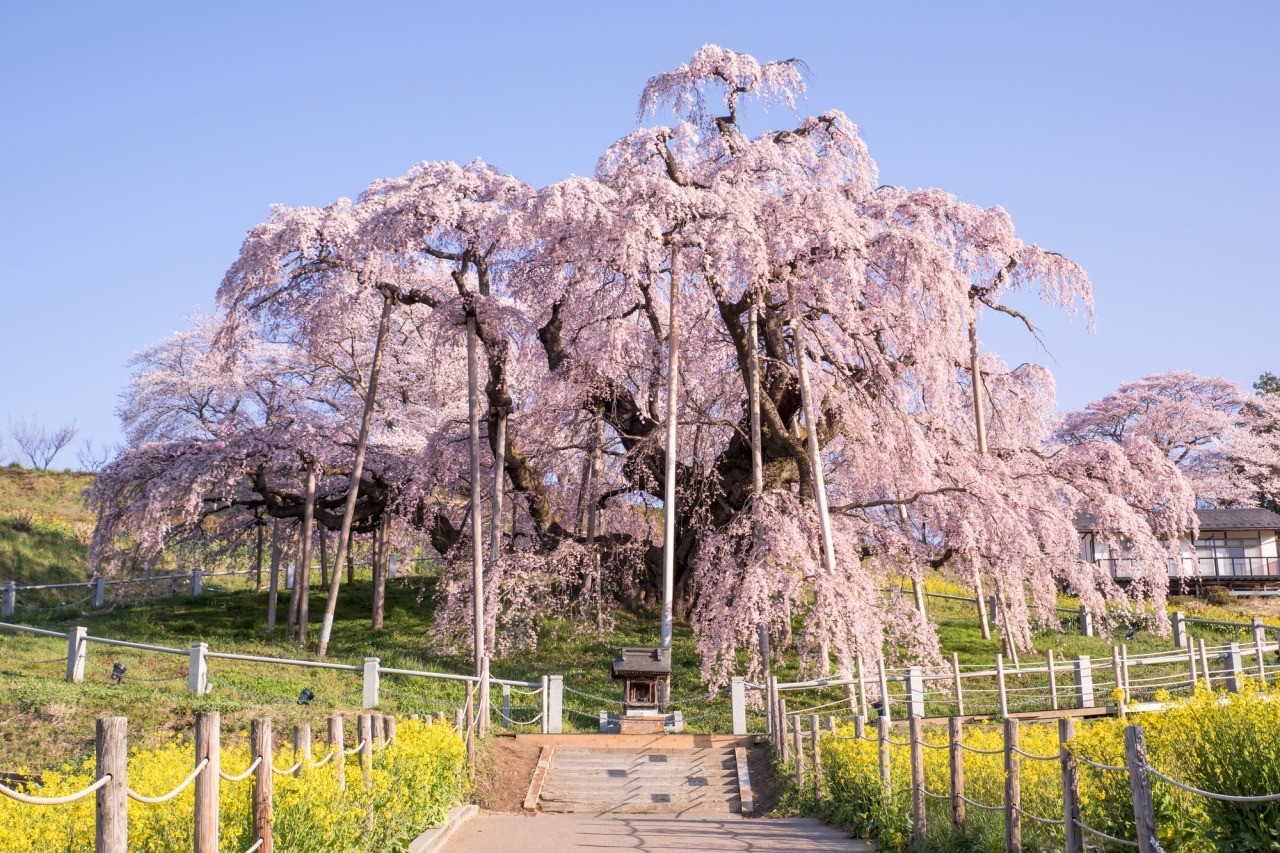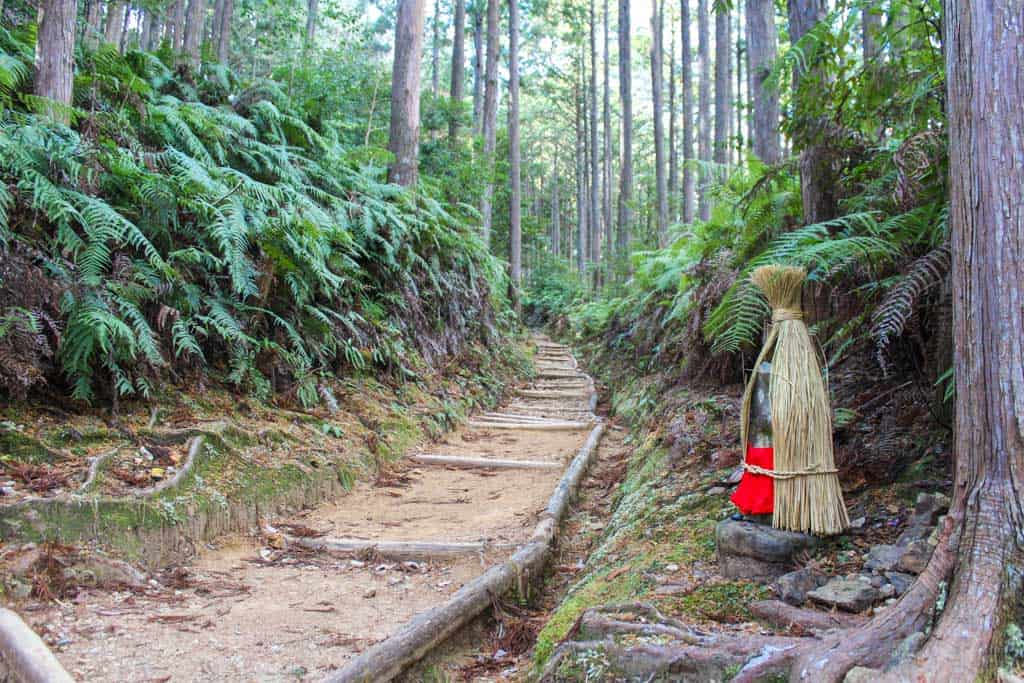Top 50 Famous Landmarks In Japan You Must Visit
When it comes to famous landmarks in Japan, the options are endless. Here’s a guide to the best sites to visit.
Author:Maya ReyesReviewer:Finn WildeApr 07, 2025178 Shares177.9K Views
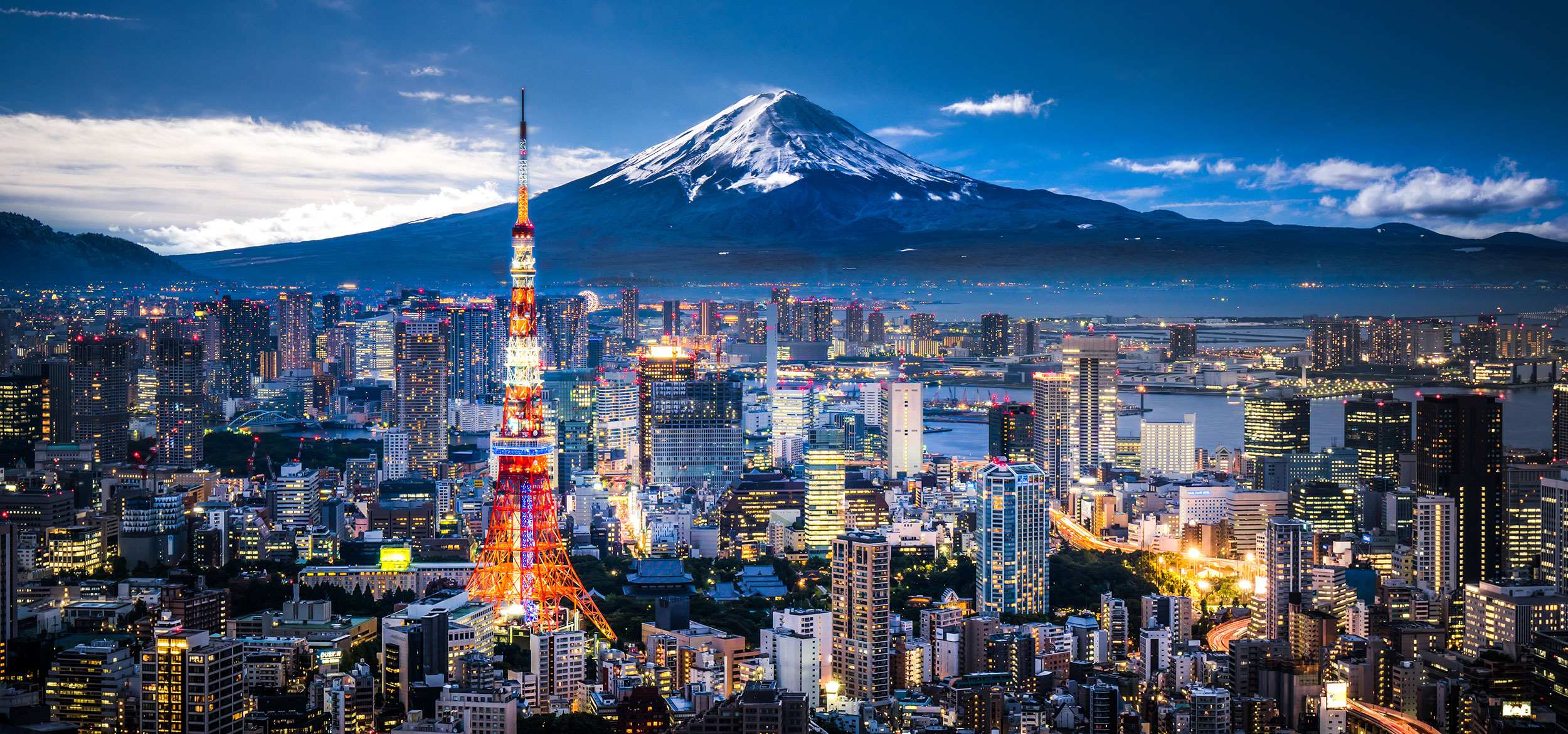
Japan is a country of contrasts-a place where ancient traditions coexist harmoniously with cutting-edge technology and modernity. From centuries-old temples and serene bamboo forests to bustling urban centers and vibrant districts, Japan offers an unmatched travelexperience that caters to all interests.
This article explores Japan’s most iconic landmarks, natural wonders, cultural experiences, and hidden gems. From the awe-inspiring beauty of Mount Fuji to the bustling energy of Shibuya Crossing, each destination reveals a facet of Japan’s rich heritage and dynamic identity.
1. Mount Fuji
Standing at 3,776 meters, Mount Fuji is Japan's tallest and most iconic mountain. Revered as a sacred site, this UNESCO World Heritage Site offers seasonal climbing opportunities from July to September, drawing hikers from across the globe.
Optimal viewing locations include Lake Kawaguchi and the Chureito Pagoda, while adventurous individuals can embark on climbing expeditions like the Yoshida Trail during the official climbing season.
For more detailed planning, including routes, weather tips, and safety advice, check out this comprehensive Mount Fuji travel guide.
Climbing Season Guide:
- Official climbing season: Early July to early September
- Best climbing conditions: Late July to late August
- Peak crowds: Obon holiday (mid-August)
Practical Tips:
- Book mountain huts in advance during climbing season
- Start climbing at night to witness sunrise (goraiko)
- Consider shoulder season visits for clearer views
2. The Hiroshima Peace Memorial
Hiroshima Peace Memorial Park serves as a solemn reminder of the devastating impact of the atomic bomb and stands as a symbol of peace. The park, with its iconic Atomic Bomb Dome and nearby museum, educates visitors about the horrors of war while promoting a message of reconciliation and hope.
Park Highlights:
- Atomic Bomb Dome- Preserved building, a UNESCO World Heritage site
- Peace Memorial Museum- Exhibits documenting the atomic bombing and aftermath
- Children’s Peace Monument- A tribute to child victims and a symbol of peace
- Cenotaph for the A-bomb Victims- Memorial for those lost in the bombing
3. Tokyo Tower
Inspired by the Eiffel Tower, Tokyo Tower stands as a symbol of Japan’s post-war recovery and modernization. Rising 333 meters above the city, the tower offers observation decks with sweeping views of Tokyo’s skyline.
Observation Decks:
- Main Deck (150m): Offers 360-degree city views
- Top Deck (250m): Premium experience with panoramic vistas
Visitor Tips:
- Opening hours: 9:00 AM - 11:00 PM (last entry 10:30 PM)
- Visit at sunset for day-to-night transition views
- Combine with nearby Zojoji Temple visit
- Special illuminations during seasonal events
4. Tokyo Skytree
As the tallest tower in the world, Tokyo Skytreeoffers unparalleled panoramic views from its observation decks. Standing at 634 meters, this architectural marvel also houses shopping complexes, an aquarium, and a planetarium.
Observation Areas:
- Tembo Deck (350m): Three levels of observation
- Tembo Galleria (450m): Spiral ramp with city views
Smart Visit Planning:
- Book tickets online to avoid queues
- Visit early morning or late evening for shorter wait times
- Check weather forecast for optimal visibility
- Consider combo tickets with nearby attractions
5. Kyoto
Kyoto, renowned for its historical temples, boasts an abundance of cultural attractions. Kinkaku-ji, or the Golden Pavilion, captivates with its golden leaf exterior reflecting on a tranquil pond. Kiyomizu-dera Temple, famous for its wooden stage, offers breathtaking views of cherry blossomsand maple trees. Ryoan-ji Temple, celebrated for its Zen rock garden, offers a serene retreat into Japanese spirituality.
6. Himeji Castle
Himeji Castle, also known as the "White Heron Castle" for its brilliant white façade, is a UNESCO World Heritage Site and a prime example of Edo-era architecture. Built in the 14th century, this well-preserved fortress is celebrated for its strategic defensive design, featuring maze-like pathways and towering stone walls.
Best Time to Visit: March-May (cherry blossoms) or October-November (fall colors)
Practical Tips:
- Opening hours: 9:00 AM - 5:00 PM (last entry 4:00 PM)
- Consider arriving early to avoid crowds
- Allow 2-3 hours for a complete visit
- Accessible via direct bus from Himeji Station
7. Osaka Castle
Osaka Castle, with its rich historical background and impressive architecture, stands as a testament to Japan's tumultuous past. The castle precincts encompass a museum detailing its history, and the adjacent park is ideal for leisurely walks. Seasonal events, such as cherry blossom viewing in spring, enhance the castle's appeal.
Castle Complex Highlights:
- Eight-story main tower
- Extensive grounds with 600 cherry trees
- Museum featuring samurai artifacts
- Nishinomaru Garden with tea house
Seasonal Attractions:
- Spring: Cherry blossom festival
- Summer: Evening illuminations
- Fall: Chrysanthemum exhibitions
- Winter: Plum blossom viewing
8. Miyajima Island
Miyajima Island, also known as Itsukushima, is a picturesque island located in the Seto Inland Sea near Hiroshima. Known for its famous torii gate that appears to float on water at high tide, this UNESCO World Heritage Site is a must-visit for anyone traveling to Japan. The island is steeped in history, natural beauty, and spirituality, making it one of Japan's top destinations.
Key Features:
- Itsukushima Shrine- The island’s most iconic landmark, this shrine is built over the water, with a large torii gate that stands in the sea.
- Mount Misen- Offering stunning views from its summit, Mount Misen is accessible by hiking or ropeway. The peak provides panoramic vistas of the surrounding islands and Seto Inland Sea.
- Friendly Deer- The island is home to friendly, roaming deer, which are often seen near the shrine and along scenic walking paths.
- Historic Temples and Pagodas- In addition to Itsukushima Shrine, the island also features historical temples and the famous five-story pagoda.
- Seafood and Local Delicacies- Miyajima is known for its delicious oysters, a regional specialty, which can be enjoyed at various restaurants and street vendors.
9. Todai-ji Temple
Todai-ji Temple, housing the largest bronze statueof Buddha in the world, is a marvel of ancient architecture and spiritual significance. The Great Buddha Hall, or Daibutsuden, is a must-visit, alongside the adjacent deer park where amicable deer roam freely, enhancing the temple's tranquil ambiance.
10. Fushimi Inari Shrine
Fushimi Inari Taisha, known for its thousands of vermilion torii gates, is one of Kyoto's most iconic landmarks. This Shinto shrine dedicated to the god of rice and agriculture offers a spiritual journey as visitors ascend the mountain, surrounded by gates that create a visually stunning experience.
Shrine Highlights:
- Torii Gate Pathway- Thousands of vibrant vermilion gates leading up Mount Inari
- Main Shrine- Center of worship and spiritual significance
- Mount Inari- Hiking trails offering panoramic views of Kyoto
- Sub-Shrines- Smaller shrines along the path with historical significance
11. The Meiji Shrine
The Meiji Shrine, nestled in the heart of Tokyo, pays homage to Emperor Meiji and Empress Shoken. This serene sanctuary amidst the bustling city is enveloped by a verdant forest and showcases traditional Shinto architecture. Visitors can engage in traditional Shinto rituals and explore the nearby Yoyogi Park.
12. Nara Park
A peaceful green space in the center of Nara, famous for its free-roaming deer and historical sites such as Todai-ji Temple. Nara Park offers a harmonious blend of nature and culture, making it a must-visit for anyone exploring the ancient capital.
Deer and Temple Highlights:
- Feeding the friendly deer with special crackers
- Exploring Todai-ji Temple, including the giant bronze Buddha statue
- Experiencing the serenity of Kasuga Taisha
13. Roppongi Hills (Tokyo)
A modern cultural complex, Roppongi Hills features skyscrapers, art galleries, restaurants, and shopping malls. The Tokyo City View observation deck offers panoramic views of the city, including a perfect view of Tokyo Tower.
14. The Imperial Palace (Tokyo)
The Imperial Palace, situated in the heart of Tokyo, is the residence of Japan's Imperial Family and a symbol of the nation's monarchy. The expansive grounds, surrounded by impressive moats and lush gardens, offer a peaceful retreat from the city's bustling atmosphere.
Key Features:
- East Gardens- Scenic gardens with historical ruins, perfect for a leisurely walk
- Nijubashi Bridge- Iconic bridge leading to the palace, offering picturesque views
- The Imperial Palace Plaza- A large open area providing views of the palace’s exterior
- Seasonal Events- Special tours and events during certain times of the year, such as New Year's celebrations
15. Kinkaku-ji (Golden Pavilion)
Kinkaku-ji, also known as the Golden Pavilion, is one of Kyoto's most famous and visually striking temples. The pavilion, covered in gold leaf, stands beautifully reflected in the surrounding pond, creating one of Japan’s most iconic images.
Kinkaku-ji Highlights:
- Golden Pavilion- A stunning Zen Buddhist temple covered in gold leaf
- Mirror Pond- A pond that reflects the beauty of the pavilion
- Zen Gardens- A peaceful, meticulously maintained landscape
- Shakyo (Temple Calligraphy)- A chance to participate in a Buddhist calligraphy activity
A Zen Buddhist temple covered in gold leaf, Kinkaku-ji is one of Japan's most stunning and well-photographed landmarks. Its serene location beside a reflecting pond adds to the temple's peaceful atmosphere.
16. Shibuya Crossing (Tokyo)
Shibuya Crossing, often referred to as the world’s busiest pedestrian scramble, is an iconic Tokyo landmark. With hundreds of people crossing from every direction at once, it’s a thrilling experience to be part of the chaotic flow of pedestrians.
Key Features:
- Shibuya Scramble- Famous pedestrian crossing with a constant flow of foot traffic
- Hachiko Statue- Tribute to the loyal Akita dog, Hachiko
- Shibuya 109- Iconic shopping mall for Tokyo’s latest fashion trends
- Shibuya Center-gai- Alleyways filled with unique shops, eateries, and nightlife
17. Odaiba (Tokyo Bay)
Odaiba is a futuristic, waterfront district in Tokyo Bay that seamlessly blends entertainment, shopping, and high-tech attractions. Originally developed as a man-made island for defense purposes, it has evolved into one of Tokyo's most exciting urban areas.
Known for its modern architecture, attractions, and scenic views of the Rainbow Bridge and Tokyo Tower, Odaiba offers something for everyone, from family-friendly activities to cultural experiences.
18. Hakone Open-Air Museum (Hakone)
Nestled in the picturesque mountains of Hakone, the Hakone Open-Air Museum is a unique fusion of contemporary art and nature. The museum’s indoor galleries showcase both Japanese and international works, making it an enriching experience for art lovers.
Must-See Highlights:
- Sculpture Park- Open-air exhibition featuring contemporary sculptures set against scenic backdrops
- Picasso Pavilion- A dedicated gallery showcasing works by Pablo Picasso
- Interactive Exhibits- Interactive art installations for visitors to engage with
- Hot Springs Footbath- Relax and rejuvenate with a footbath while enjoying views of Mount Fuji
19. Ginkaku-ji (Silver Pavilion) (Kyoto)
Ginkaku-ji, also known as the Silver Pavilion, is a Zen Buddhist temple located in Kyoto. Renowned for its simple yet elegant design, Ginkaku-ji is surrounded by meticulously curated gardens, including a moss garden and a dry sand garden that reflect Zen philosophy.
It offers a serene, contemplative atmosphere, perfect for those seeking peace away from the hustle of Kyoto’s more tourist-heavy attractions.
20. Kiyomizu-dera (Kyoto)
Kiyomizu-dera is one of Kyoto’s most celebrated UNESCO World Heritage Sites, renowned for its massive wooden stage that extends from the main hall, offering stunning views of the city.
Key Highlights:
- Main Hall (Hondo)- The impressive structure perched on stilts, offering panoramic views of Kyoto
- Otawa Waterfall- Visitors can drink from the three streams of water believed to have health benefits
- Jishu Shrine- A shrine dedicated to love and matchmaking, with a famous “love stone”
- Cherry Blossom Viewing- Kiyomizu-dera is one of the best spots in Kyoto to see cherry blossoms in full bloom
21. Shinjuku Gyoen National Garden (Tokyo)
Shinjuku Gyoen National Garden, located in central Tokyo, is a perfect oasis of calm amidst the city’s fast pace. It’s an ideal spot for a peaceful escape or a leisurely walk, particularly during the cherry blossom season when the park is at its most vibrant.
Highlights to Explore:
- Japanese Gardens- Tranquil ponds, bridges, and bonsai trees create a traditional Japanese garden experience
- English Landscape Garden- Wide-open spaces and winding paths ideal for a relaxing stroll
- French Formal Garden- Neatly arranged flowerbeds and symmetrical pathways
- Seasonal Flower Displays- Beautiful floral displays, particularly during cherry blossom and autumn foliage seasons
22. Sensoji Temple
Located in Tokyo’s Asakusa district, Sensoji Temple is Tokyo’s oldest Buddhist temple, dating back to the 7th century. The temple is dedicated to the Bodhisattva Kannon, the goddess of mercy, whose statue was discovered by fishermen in the nearby Sumida River.
The approach to the temple is lined with Nakamise Shopping Street, where visitors can purchase traditional goods and snacks. The temple’s iconic red gate, Kaminarimon, and its five-story pagoda make it a must-visit for anyone exploring Tokyo.
Practical Information:
- Temple grounds: Always open
- Main hall: 6:00 AM - 5:00 PM (October-March until 4:30 PM)
- Free admission
- Accessible via Asakusa Station (multiple train lines)
23. Arashiyama Bamboo Forest
Arashiyama Bamboo Forestlocated near Kyoto, the Arashiyama Bamboo Forest is a serene grove of towering bamboo stalks that sway gently in the breeze, creating a tranquil and otherworldly ambiance.
Best Experience Times:
- Early morning: Fewer crowds, best natural light
- Golden hour: Magical lighting for photography
- Weekdays: Generally quieter atmosphere
24. Kegon Falls
Nestled in Nikko National Park, Kegon Falls is one of Japan's most spectacular waterfalls, plunging 97 meters into the valley below.
Visitors can enjoy stunning views from the observation platforms or take an elevator down to the base for a closer look. In autumn, the surrounding foliage transforms the area into a breathtaking tapestry of red and gold.
25. Lake Kawaguchiko
As part of the Fuji Five Lakes, Lake Kawaguchiko offers some of the most stunning views of Mount Fuji. The area is a haven for outdoor activities, including hiking, cycling, and hot spring bathing.
Seasonal events, such as cherry blossom festivals and autumn foliage displays, make it a year-round attraction.
26. Amanohashidate
Known as the “Bridge to Heaven,” Amanohashidateis a picturesque sandbar in northern Kyoto Prefecture. It stretches across Miyazu Bay, lined with pine trees and offering breathtaking views from surrounding hills.
This natural wonder is considered one of Japan's "Three Views," a designation reserved for the country's most scenic landscapes.
27. Shirakawa-go Village
Shirakawa-go, a UNESCO World Heritage Site, is famous for its traditional gassho-zukuri farmhouses, some over 250 years old. These thatched-roof structures are designed to withstand heavy snow, reflecting the ingenuity of their creators.
In winter, the village becomes a magical snowy wonderland, and during summer, lush greenery envelops the area, making it a must-visit for travelers interested in rural Japan.
Seasonal Attractions:
- Winter: Evening light-up events (January-February)
- Spring: Mountain vegetables and cherry blossoms
- Summer: Traditional festivals and fireflies
- Fall: Harvest time and autumn colors
28. The Hells Of Beppu
Located in Oita Prefecture, the Hells of Beppu is a geothermal wonder featuring boiling hot springs in vivid hues of blue, red, and white.
Though too hot for bathing, these natural phenomena are mesmerizing to behold. Visitors can also enjoy traditional onsen baths in the area’s many hot spring resorts.
Notable Hells:
- Umi Jigoku (Sea Hell): Cobalt blue hot spring
- Chinoike Jigoku (Blood Pond Hell): Red-colored pool
- Oniyama Jigoku: Home to crocodiles
- Shiraike Jigoku (White Pond Hell): Milky white waters
29. Jigokudani Monkey Park
Located in Nagano, Jigokudani Monkey Park is renowned for its wild snow monkeys that relax in natural hot springs, particularly during the winter months.
The monkeys’ playful antics and human-like expressions make this park a favorite for animal lovers and photographers alike.
Seasonal Highlights:
- Winter (December-March): Best time for snow monkey viewing
- Spring: Baby monkeys with cherry blossoms
- Summer: Monkey families foraging in forest
- Fall: Monkeys against autumn colors
Visit Planning:
- Trail length: 1.6 km (30-minute walk)
- Bring appropriate footwear for snowy/muddy conditions
- Photography tips: Telephoto lens recommended
- No feeding or touching monkeys allowed
30. Nagasaki Peace Park
Nagasaki Peace Park, dedicated to the victims of the atomic bombing, offers a tranquil environment for reflection. The Peace Statue and surrounding monuments serve as a reminder of the city’s history and the ongoing global call for peace.
Park Highlights:
- Peace Statue- A symbol of peace and hope, holding one arm raised
- Nagasaki Atomic Bomb Museum- A poignant collection of artifacts and survivor accounts
- Fountain of Peace- Representing the wish for a peaceful future
- Various Sculptures- Honoring victims and global peace efforts
31. Ashikaga Flower Park
Ashikaga Flower Park is a paradise for flower enthusiasts, particularly during the spring season when its famous wisteria blooms. Known for its colorful and fragrant displays, the park offers a breathtaking experience with seasonal flower exhibitions throughout the year.
Park Highlights:
- Wisteria Tunnel- Cascading wisteria blooms in purple, white, and pink
- Seasonal Flower Displays- Tulips, roses, and hydrangeas in full bloom
- Kakegawa’s Wisteria- Massive wisteria trees creating a surreal canopy
- Evening Illumination- Magical light displays during certain seasons
32. Studio Ghibli Museum
The Studio Ghibli Museum in Mitaka is an immersive experience for fans of the iconic animation studio. It brings to life the whimsical worlds of films like Spirited Awayand My Neighbor Totoro, showcasing the creative process behind Studio Ghibli's masterpieces.
Museum Highlights:
- Life-Size Totoro- The beloved character from My Neighbor Totoro
- Exhibition Rooms- Interactive displays of Ghibli’s animation process
- Catbus Playroom- A giant, playable Catbus from My Neighbor Totoro
- Film Screening Room- Exclusive short films shown on a rotating basis
33. Naoshima Art Island
Naoshima, an island known for its contemporary art installations, offers visitors a unique fusion of art and nature. Famous for works by artists like Yayoi Kusama, the island’s art museums and open-air installations make it a premier destination for art lovers.
Island Highlights:
- Yayoi Kusama’s Pumpkins- Iconic polka-dotted pumpkins on the island’s shores
- Benesse House Museum- A museum dedicated to contemporary art in harmony with nature
- Chichu Art Museum- Exhibitions by renowned artists like James Turrell
- Outdoor Installations- Sculptures and art pieces scattered across the island
34. Dotonbori
Dotonbori, located in the heart of Osaka, is a vibrant entertainment and food district known for its neon lights, extravagant signage, and a variety of street food. The area is particularly famous for its oversized, illuminated advertisements, like the Glico Running Man, and its lively atmosphere, especially at night.
Must-See Spots:
- Glico Running Man Sign- Iconic illuminated billboard
- Street Food Stalls- Serving Osaka specialties like takoyaki and okonomiyaki
- Dotonbori Canal- Scenic canal with boat rides available
- Shinsaibashi-suji Shopping Arcade- A popular shopping street full of fashion and souvenirs
35. Matsushima Bay
Matsushima Bay, one of Japan’s "Three Views," is renowned for its breathtaking scenery, characterized by over 200 small islands dotted across the bay. The islands are covered in pine trees, creating a serene and picturesque landscape that has inspired poets and artists for centuries.
Matsushima Bay Highlights:
- Island Boat Tours- Scenic boat rides around the pine-covered islands
- Zuigan-ji Temple- Historic temple offering panoramic views of the bay
- Tegata-shima Island- A small island accessible by boat, perfect for hiking
- Oshima Island- Known for its pristine nature and wildlife
36. Tsukiji Fish Market
Though the inner wholesale market moved to Toyosu, the Tsukiji Fish Market remains a cultural icon and a must-visit for seafood lovers. Here, visitors can experience the buzzing market atmosphere while sampling fresh sushi, sashimi, and other seafood dishes.
What to Explore:
- Outer Market- Vibrant market with seafood stalls and local food vendors
- Sushi Shops- Offering some of the freshest sushi in Tokyo
- Kaisen-don- A delicious bowl of rice topped with fresh seafood
- Traditional Fish Markets- A sensory experience of fresh fish and seafood preparation
37. Sangenjaya District
Tucked away in the Setagaya ward of Tokyo, Sangenjaya is a charming and lesser-known district that offers a more local, laid-back vibe compared to the hustle of Shibuya or Shinjuku.
Local Treasures:
- Local Bars and Izakayas- Cozy drinking spots offering casual dining
- Nakamise-dori Street- A vibrant lane filled with traditional food and shops
- Carrot Tower- A landmark offering panoramic views of Tokyo from the 26th floor
- Quiet Residential Streets- Charming alleys and quiet corners, perfect for a stroll
38. Kobe Port
Kobe Port, a major harbor city on Japan’s Pacific coast, is a symbol of resilience and rebirth after the 1995 Great Hanshin Earthquake. The port area offers a blend of modern architecture, maritime heritage, and cultural landmarks.
Visitors can enjoy spectacular views of the waterfront, visit historical sites, and explore the famous Kobe Harborland, which boasts shopping, dining, and entertainment options.
39. Daibutsu (Great Buddha Of Kamakura)
The Daibutsu, located at Kotoku-in Temple in Kamakura, is one of Japan’s most iconic and revered landmarks. This monumental bronze statue of Amida Buddha, standing at 13.35 meters tall, has been a symbol of peace and tranquility for centuries. It provides a serene and powerful presence, attracting visitors who wish to reflect on the Buddha’s teachings.
40. Zenkoji Temple (Nagano)
Zenkoji Temple is one of Japan’s oldest and most important Buddhist temples, located in Nagano. Established in the 7th century, it is famous for housing the first Buddhist statue ever brought to Japan.
Must-See Highlights:
- Main Hall- The grand hall where the hidden statue of the Buddha is housed.
- Gokuraku-jodo Garden- A tranquil garden representing the Buddhist Pure Land.
- Underground Passage- A unique dark passage beneath the temple where visitors seek spiritual enlightenment by groping their way in darkness.
- Nakamise-dori Street- A vibrant shopping street leading to the temple, filled with traditional shops and local food.
41. Machiya, Kyoto
Machiya refers to traditional wooden townhouses found in the historic districts of Kyoto. These charming structures offer a glimpse into the old-world Kyoto lifestyle, where residents lived and worked in harmony.
What to See:
- Traditional Architecture- Wooden facades with sliding doors and tatami mat interiors.
- Shops and Tea Houses- Small, locally-owned businesses offering handmade crafts and traditional tea ceremonies.
- Kyo-machiya Preservation- Many Machiya houses have been preserved and repurposed as cultural heritage sites.
- Kyoto’s Old Town- Areas like Gion and Higashiyama showcase the essence of traditional Machiya living.
42. Hachiko Statue (Shibuya, Tokyo)
The Hachiko Statue in Shibuya honors the remarkable loyalty of an Akita dog named Hachiko. Every day, Hachiko waited at Shibuya Station for his owner, who tragically passed away in 1925. The statue now stands as a symbol of loyalty and devotion, attracting visitors from around the world who come to pay tribute to this iconic dog.
Notable Features:
- Statue Location- Located right outside Shibuya Station, it’s a popular meeting point and tourist attraction.
- Hachiko’s Story- The true story of Hachiko’s unwavering loyalty is told through plaques and historical displays.
43. Tetsujin 28-go Robot (Kobe)
Tetsujin 28-go, also known as Gigantor in English, is a monumental statue of a giant robot in Kobe, inspired by the classic 1950s manga and anime of the same name. This 18-meter tall statue is a tribute to Japan’s pop culture and the legacy of early robot-themed media.
Tetsujin 28-go is located near the museum, linking the city’s history with technology and pop culture. The statue’s size and position make it a great spot for photography and exploration
44. Akashi Kaikyo Bridge (Kobe)
The Akashi Kaikyo Bridge, also known as the Pearl Bridge, is the longest suspension bridge in the world, connecting the city of Kobe to Awaji Island. This engineering marvel spans 3,911 meters across the Akashi Strait and offers breathtaking views of the Seto Inland Sea.
Visitors can enjoy stunning views of the bridge and surrounding sea from designated viewpoints.
45. Miharu Takizakura (Fukushima)
Miharu Takizakura is one of Japan’s most famous cherry blossom trees, located in the town of Miharu in Fukushima Prefecture. Estimated to be over 1,000 years old, this spectacular weeping cherry tree creates a breathtaking sight in spring as its pink blossoms cascade like a waterfall.
What Makes It Special:
- Historical Tree- One of Japan’s oldest and most famous cherry trees.
- Spectacular Blossoms- In spring, the tree’s blossoms bloom profusely, creating a stunning “waterfall” effect.
- Cultural Significance- The tree is celebrated for its cultural and historical importance, often featured in cherry blossom festivals.
- Scenic Surroundings- The tree is located in a peaceful rural area, making it a perfect spot for cherry blossom viewing.
46. Kumano Kodo Pilgrimage Routes (Kii Peninsula)
The Kumano Kodo is a network of ancient pilgrimage routes that traverse the Kii Peninsula, offering an immersive journey through sacred mountains and forests. The paths have been walked by pilgrims for over 1,000 years, leading to the Kumano Sanzan, three grand shrines that are important to Japanese Shinto beliefs.
Key Highlights:
- Historical Trails- UNESCO World Heritage Site with routes that date back to the Heian period
- Onsen Stops- Traditional hot springs for relaxation after a long day’s trek
47. Tottori Sand Dunes Conan (Tottori)
The Tottori Sand Dunes Conan is Japan’s only desert landscape, offering a unique natural experience in a country known for its lush greenery. The dunes stretch for over 16 kilometers and are home to the Tottori Sand Dunes Conan Conan Park, where visitors can enjoy camel rides, sandboarding, and more.
Experience camel rides like those in desert landscapes. An outdoor museum showcasing intricately crafted sand sculptures from around the world.
48. Okinawa Churaumi Aquarium (Okinawa)
The Okinawa Churaumi Aquarium, located on the island of Okinawa, is one of the largest and most impressive aquariums in the world. Its massive Kuroshio Sea Tank features whale sharks, manta rays, and a host of other marine life, making it a must-see for ocean lovers.
- Kuroshio Sea Tank- One of the world’s largest aquariums, home to majestic whale sharks and giant manta rays.
- Coral Reef Exhibits- Explore Okinawa’s beautiful coral reefs and the unique marine life they support
- Dolphin Shows- Watch dolphins perform in an interactive show
- Interactive Displays- Touch pools and educational exhibits that provide hands-on learning about ocean life..
49. Ise Jingu (Ise)
Ise Jingu is Japan’s most sacred Shinto shrine, dedicated to the sun goddess Amaterasu. Located in Ise City, this grand shrine complex consists of two main shrines, the Inner Shrine (Naiku) and the Outer Shrine (Geku), both set in tranquil forested surroundings. It has been a site of pilgrimage for over 2,000 years.
50. Ritsurin Garden (Takamatsu)
Ritsurin Garden, located in Takamatsu on Shikoku Island, is one of Japan's most renowned landscape gardens.
Key Features:
- Stunning Landscape Design- The garden spans 75 hectares and features carefully arranged ponds, hills, and bridges, creating a peaceful atmosphere.
- Tetsujin Bridge- A picturesque wooden bridge that gracefully crosses one of the garden’s largest ponds, offering a stunning view of the surrounding landscape.
- Historic Tea Houses- Traditional tea houses where visitors can enjoy matcha tea while taking in the serene surroundings.
- Seasonal Beauty- The garden changes with the seasons, from vibrant cherry blossoms in spring to rich autumn colors, providing different experiences year-round.
FAQs About Famous Landmarks In Japan
When Is The Optimal Time To Visit Mount Fuji?
The prime period to visit Mount Fuji is during the climbing season from early July to mid-September when the weather is mild, and trails are accessible.
Do These Landmarks Have Entrance Fees?
Many landmarks, such as temples and castles, entail entrance fees ranging from a few hundred yen to over a thousand yen. It is advisable to verify individual sites for precise pricing.
How Can One Travel Between These Landmarks?
Japan boasts an efficient public transportation network, encompassing trains and buses that interconnect major attractions. Consider acquiring a Japan Rail Pass for streamlined travel.
Final Words
Japan is a country brimming with diverse and fascinating landmarks that reflect its rich history, culture, and natural beauty. From the serene gardens of Kyoto to the vibrant streets of Tokyo, there's something for every type of traveler.
While this list showcases some of the best, there are countless other hidden gems waiting to be explored.
You Might Like: 8 Steps To Move To A New Country
Jump to
1. Mount Fuji
2. The Hiroshima Peace Memorial
3. Tokyo Tower
4. Tokyo Skytree
5. Kyoto
6. Himeji Castle
7. Osaka Castle
8. Miyajima Island
9. Todai-ji Temple
10. Fushimi Inari Shrine
11. The Meiji Shrine
12. Nara Park
13. Roppongi Hills (Tokyo)
14. The Imperial Palace (Tokyo)
15. Kinkaku-ji (Golden Pavilion)
16. Shibuya Crossing (Tokyo)
17. Odaiba (Tokyo Bay)
18. Hakone Open-Air Museum (Hakone)
19. Ginkaku-ji (Silver Pavilion) (Kyoto)
20. Kiyomizu-dera (Kyoto)
21. Shinjuku Gyoen National Garden (Tokyo)
22. Sensoji Temple
23. Arashiyama Bamboo Forest
24. Kegon Falls
25. Lake Kawaguchiko
26. Amanohashidate
27. Shirakawa-go Village
28. The Hells Of Beppu
29. Jigokudani Monkey Park
30. Nagasaki Peace Park
31. Ashikaga Flower Park
32. Studio Ghibli Museum
33. Naoshima Art Island
34. Dotonbori
35. Matsushima Bay
36. Tsukiji Fish Market
37. Sangenjaya District
38. Kobe Port
39. Daibutsu (Great Buddha Of Kamakura)
40. Zenkoji Temple (Nagano)
41. Machiya, Kyoto
42. Hachiko Statue (Shibuya, Tokyo)
43. Tetsujin 28-go Robot (Kobe)
44. Akashi Kaikyo Bridge (Kobe)
45. Miharu Takizakura (Fukushima)
46. Kumano Kodo Pilgrimage Routes (Kii Peninsula)
47. Tottori Sand Dunes Conan (Tottori)
48. Okinawa Churaumi Aquarium (Okinawa)
49. Ise Jingu (Ise)
50. Ritsurin Garden (Takamatsu)
FAQs About Famous Landmarks In Japan
Final Words

Maya Reyes
Author
Maya Reyes’s wanderlust was sparked in the temples of Luang Prabang, where the scent of lemongrass and the chants of monks revealed the transformative power of travel.
Since then, her journey has been defined by cultural immersion and authentic connections. From learning batik in Indonesia to sharing meals with nomadic families in Mongolia, Maya seeks experiences that highlight the human stories behind each destination.
Travel for her is a way to weave her narrative into the world’s cultural tapestry, creating bridges across diverse ways of life. Maya has traveled to 15 countries and shares her insights through writing and storytelling.

Finn Wilde
Reviewer
For Finn Wilde, the wilderness is more than just a destination - it’s a way of life. Over the past decade, he has led multiple expeditions in some of the world’s most remote regions, from the icy fjords of Greenland to the rugged trails of Patagonia.
Finn emphasizes sustainability in all of his adventures, helping participants connect with nature while promoting responsible exploration. His expeditions inspire individuals to explore the great outdoors while fostering a deep respect for the environment.
Latest Articles
Popular Articles
